SHARED ARTICLES AND REFLECTIONS (continued)
please scroll down to read earlier articles

|
VACATION and EMPTINESS.pdf Size : 8483.879 Kb Type : pdf |

|
Poems offered 2023 Judy.docx Size : 136.883 Kb Type : docx |
taken from Cistercian studies Quarterly 40.3

|
kurisumala , Inculturation.pdf Size : 216.064 Kb Type : pdf |

|
F A, MEDITATION,Hindu-Christian meeting point,English.pdf Size : 355.439 Kb Type : pdf |

|
1 Poems 2022.docx Size : 11.782 Kb Type : docx |

|
D'ORTSCHY Brigitte ZEN-Master English version.pdf Size : 2101.379 Kb Type : pdf |
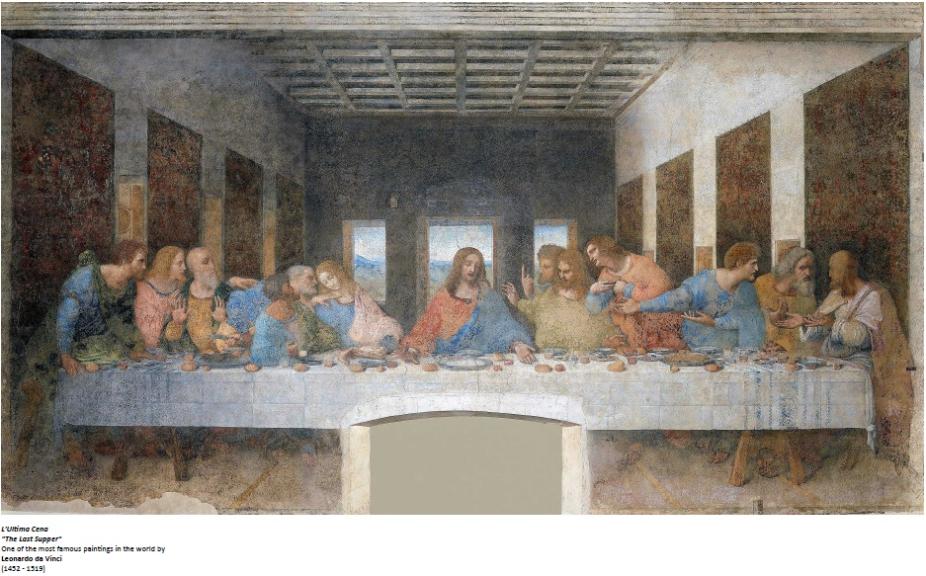
Reading the Psalms: Thomas Merton, C.S. Lewis and Bede Griffiths
Ron Dart
I
Thomas
Merton (1915-1968), C.S. Lewis (1898-1963) and Bede Griffiths (1906-1993) are,
probably, three of the most significant Christian writers of the 20th century. Lewis held Merton in high
regard and Lewis- Griffiths had a decades long friendship. Merton thought Lewis
was a superb writer and many were his affinities with Griffiths. Each of these
men have their loyal followers and, sadly so, some of the disciples know little
of how each of the men respected one another. Lewis was a lay Anglican, but he
would have read the Psalms once a month as a result of living through Anglican
Morning and Evening Prayers, whereas Griffiths and Merton were monks, hence
each would have read the Psalms once a week in the Divine Offices. This means
that each of the men was thoroughly acquainted with the Psalms and the dilemmas
raised by their confessional nature.
The fact that Lewis, Griffiths and Merton meditatively internalized the Psalms meant that they had to, in their faith journey, ponder how to read the Psalter, some psalms being quite uplifting in their vision and description of the inner journey, others being quite graphic in their vindictive attitudes, some being quite noble in their political vision, others being quite warrior like and tribal. It was, therefore, in the reading of the Psalms, in a regular way, that Lewis, Griffiths and Merton, as they attempted to interpret and make sense of their faith journey, struggled with how to read the Psalms. It was in this inner pondering of faith experience of the various writers of the Psalms and Lewis’, Griffiths’ and Merton’s understanding of their Christian journey that, inevitably so, nudged each of the men to write a book on the Psalms.
Merton was the first to write a book on the Psalms, dedicated to Jean Danielou (who he considered a spiritual father of sorts). Bread in the Wilderness was published in 1953, and although Merton, wrongly so, I think, thought it one of his “fair” books (it should, perhaps, be in the category of “good” or “better”), the missive reflects the younger Merton engaging the Psalms in a nuanced manner. Lewis published Reflections on the Psalms in 1961, and it is dedicated to one of the finest 20thcentury Anglican theologians, Austin Farrer, and his wife, Katharine Farrer. Roland Ropers edited for Griffiths his more controversial Psalms for Christian Prayer that was published after Griffiths’ death in 1995, although there is a fine “Introduction” by Griffiths written, obviously, before his death in 1993.
Lewis, Griffiths and Merton each approached and read the Psalms in different ways, and the purpose of this short essay is to examine how their approach is different and the difference it makes.
II
Merton and the Psalms
Merton was younger than Lewis and Griffiths, but his commitment to the Cistercian journey in 1941 and the fact his initial Abbot encouraged him to write meant that Merton threaded together, throughout all his monastic life, the external structure of the monastic journey (which meant reading the Psalms once a week), his internal appropriation of the Psalms and his attempt to articulate the relationship between the Psalms, personal experience and contemplation. The sheer success of Merton’s Seven Storey Mountain in 1948 made it abundantly clear that Merton had writing gifts that needed to be encouraged (both for Merton’s sake and the monastery). Merton had lived the Divine Office for almost ten years before he wrote Bread in the Wilderness. The book was ready to go to print in 1950, but because of contractual conflicts, it did not leave the publishing tarmac until 1953. But, Bread in the Wilderness reflects and embodies significant aspects of the monastic and contemplative approach to reading the Psalms. The book does have its limitations and weak points, but, for the most part, there is much substance and depth in it that is worth the heeding. There is a regrettable tendency, amongst some Merton scholars, of the more liberal left bent, to see the Merton of the 1960s as the real and mature Merton—this approach tends to negate the fact that Merton had significant commitments to the traditional monastic way of seeing and being, and his read of the Psalms in Bread in the Wilderness has something quite perennial about it (at the core). Merton lived with many a tension, and one of the tensions was between the classical and modern, and he had the judicious wisdom to say sic et non to both.
The original publication by New Directions publishing in 1953 of Bread in the Wilderness had, on the front cover, the graphic and not to be forgotten head of “this terrible masterpiece” of the Le Devot Christ that hangs in the chapel beside the Cathedral of Perpignan in Southern France. It is a gruesome carving of the suffering Christ still on the cross, and each section of Bread in the Wilderness highlights different parts of the crucifix. The 1954 edition of Bread in the Wilderness (London: Hollis & Carter) has a more benign front cover with seeds in the soil rising to mature form, but Le Devot Christ is included in the main content of the book. Merton had, obviously, wanted to make it clear that the Psalms were not meant to be merely literature, but, as his introductory passage from Mark 8:4 indicates, “bread in the wilderness”---Le Devot Christ is the Christ ever on the cross, then and now, the cross and the wilderness being at one. It was then, for Merton, the intimate connection between the daily readings of the Psalms, Le Devot Christ, various notions of wilderness in soul and society from which the Psalms as bread in the wilderness had to be set and seen. In short, wilderness and a being still on the cross are the context within which the Psalms could be best read.
Bread in the Wilderness is divided into five main sections with a “Prologue” and “Epilogue” acting as bookends to the substance of the text. There is a sense in which Merton is offering the reader a literary and literate way to read the Psalms that nourishes the soul and society in the wilderness of time. The five sections clarify, in an incisive manner, how to read the Psalms from within a classical monastic context that also has a perennial and non-monastic appeal to it. Each of the five sections walk the attentive read deeper into ways and means of, in a more mature manner, internalizing the Psalms: 1) Psalms and Contemplation, 2) Poetry, Symbolism and Typology, 3) Sacramenta Scripturarum, 4) The Perfect Law of Liberty and 5) The Shadow of Thy Wings. Each of these five main sections are then broken down into smaller areas worth the pondering. Merton does not flinch from facing into the difficult psalms and offering interpretations of them, but he is equally committed to understand how to read them in a meditative and contemplative manner, given the fact monks recite the full Psalter once a week. Needless to say, such a formal approach within the monastic tradition can, if not careful, become merely formality and the existential meaning of the Psalms can be missed. Bread in the Wilderness is, in its unique and uncanny way, a contemplative exegetical, philosophical, theological, ecclesial and public hermeneutical portal into the Psalms beginning with tragedy and suffering as a given in the all too human journey. Needless to say, such an approach, when rightly understood, avoids the pitfalls of a sort of thin devotionalism and deadening formalism. The task of knowing how to read religious literature is, probably, more important than, simply, just reading it. Bread in the Wilderness offers a wise and discerning “how”, hence, in some ways, the reason this packed missive is more than a “Fair” book in Merton’s ranking of his published writings.
Bread in the Wilderness, as I mentioned above, is, in some senses, Merton’s layered summing up of his nuanced approach, drawn from the classical Christian and monastic ethos, of how to read the Psalms, now almost ten years being a monk and living what he is writing about.
There can be no doubt that the themes of wilderness, the crucified and suffering Christ, the Christ who is still, in some ways, still on the cross will remain with Merton throughout the 1950s until his death in 1968. There is, then, the obvious sense that Merton reads the Psalms in a Christocentric manner that is immersed in the most painful aspects of the human journey but in which hope and healing, transformation and liberty are essential to such a pilgrimage.
If Merton embraced and accepted all the Psalms and offered a nuanced way to read them, how was Lewis’ approach similar yet different?
III
C.S. Lewis: Reading the Psalms
There has been a historic tendency to ignore Lewis’ admiration for Merton and Merton’s respect for Lewis. I have touched on their mutual honouring of one another in my article, “C.S. Lewis and Thomas Merton: Soul Friends” (Crux: A Quarterly Journal of Christian Thought and Opinion published by Regent College: Summer 2014, Vol. 50, No. 2)—if only the followers of Lewis and Merton were as gracious and generous as their teachers. Lewis was a catholic Anglican who, true to the Prayer Book, would have traversed the Psalms once a month in Morning and Evening Prayers. This means, in Lewis’ many reads of the Psalms (12 times a years) he would have had to make sense of both the appeal of the finest and most contemplative psalms and some of the most vindictive, violent and war like psalms Were all of the psalms to be read and inwardly digested with equal authority or was there a more complex way of reading the psalms? Obviously, Merton and Lewis leaned towards the latter approach, both being literary men with contemplative bents and leanings (Merton more focussed in such a path and vocation than Lewis) yet their method in making sense of the Psalms somewhat different. The turn and publication by Lewis in his read of the Psalms emerges in Reflections on the Psalms, published in 1961 (reflecting, in some ways, Lewis’ decades long ponderings on how to read the Psalms. The fact Reflections on the Psalms is dedicated to Austin and Katharine Farrer (Austin being a significant Anglican Divine and theologian who only in the last few years is being given his rightful due) speaks much about the Lewis-Farrer relationship that delved deep and deeper into exegesis, theology, philosophy, ecclesiology and public life. Needless to say, Farrer held Lewis in high regard as a theologian and exegete (something that is often ignored in Lewis studies).
Reflections on the Psalms is divided in twelve short chapters with Appendix I-- Selected Psalms and Appendix II—Psalms discussed or mentioned as a finale of sorts. Each chapter tends to be more discursive than Merton’s approach, but the major theses are reflected upon is suggestive detail. There is a sense in which each chapter needs to be read a few times and meditatively reflected upon at various levels. The chapter headings speak for themselves: 1) Introduction, 2) “Judgement” in the Psalms, 3) The Cursings, 4) Death in the Psalms, 5) “The Fair Beauty of the Lord”, 6) “Sweeter than Honey”, 7) Connivance, 8) Nature, 9) A Word about Praising, 10) Second Meanings, 11) Scripture, 12) Second Meanings in the Psalms.
Lewis, like Merton, and unlike Griffiths, accepted the fullness of the Psalter. This meant Lewis and Merton had to deal with many of the vindictive, enemy, battle cry, nationalist psalms which seemed so contrary to the teachings of Christ in the New Testament. Merton tended to look into some psalms but, true to form (which I will discuss later) gave them a Christological, allegorical or typological interpretation (rather than a merely literal). Lewis, being a Medieval-Renaissance scholar, acknowledged these reads, but he was also interested on understanding the literal, historic and root experiences of such psalms. “Judgment” in the Psalms (II) and “The Cursings” (III) probes the reasons why such psalms are in Scripture. What were the varied historic experiences of the Jewish writers that would legitimate some of the ethnic and nationalist, vindictive and judgmental psalms that are included in the Psalms? It is these questions raised by Lewis (not, of course, legitimating such attitudes or actions) that makes Lewis’ more layered historic literalism worth many a read: II-III are must reads in Reflections on the Psalms on an approach to the problematic psalms that both embraces all the psalms and does so without, initially, going down the allegorical, typological or Christological route. This does not mean, though, that Lewis ignores this approach. But, in II-III, he ponders, ways of why some psalmists had such a dualistic worldview (something which Griffiths engages in quite a different way).
Bread in the Wilderness is, in many ways, committed to understanding the relationship between the contemplative, poetry, symbolism, typology and the sacramenta scripturarum. Such an approach to reading the Psalms is, obviously, quite different from a literal, grammatical, historic and linguistic approach. The final section of Reflections on the Psalms has many an affinity with Merton. Lewis and Merton were both immersed in the classical catholic vision. Lewis calls his approach, “Second Meanings” (X), “Scripture” (XI) and “Second Meanings in the Psalms” (XII). Needless to say, Lewis, like Merton, attempted to avoid the reductionism of, on the one hand, the reading of the Psalms, to the literal and historical, and, on the other hand, an irresponsible allegorizing of the Psalms. This more nuanced and refined via media of sorts, recognized the Psalms could be read at a variety of levels, and the second meanings could illuminate the journey of the soul in a way the first order meanings could not (which did not mean the literal-historic approach should be denied at a certain level). Lewis delves into more depth and detail in chapters X-XII on how and why second meanings are more significant than does Merton, although both, from different angles, reach some similar conclusions (Merton somewhat more, obviously, monastic and Roman Catholic than Lewis might be). But, both men, drawing from a Classical and Medieval approach to Scripture (Lewis more grounded the Renaissance tradition than Merton) hold high the integration and priorizing of the literal, allegorical, typological and Christological read of the Psalms, Lewis, perhaps, more willing to engage some of the higher-lower criticism and historic reasons for the nationalist and battle cry psalms. It was this ongoing tension that needed to be held together for a more appropriate reading of the Psalms that Lewis and Merton, from different approaches, agreed upon. It is in this sense that Bread in the Wilderness and Reflections on the Psalms need to be read together, the former more contemplative and monastic in focus, the latter more discursive and analytical in tendency, although both books share much in common. It should be noted that chapters in X-XII in Reflections on the Psalms reveals, in many ways, Lewis’ broader Biblical and exegetical hermeneutic.
Bede Griffiths’ had a more controversial approach to reading the Psalms (more selective than comprehensive) that separates his approach from Merton and Lewis.
IV
Bede Griffiths: Reading the Psalms
Griffiths, like Merton and Lewis, was acutely aware of the various ways of reading the Psalms. There was, of course, the literal and historic level, then, in ascending order, the allegorical culminating in the Christological. But, Griffiths was enough of a modern person to linger at the literal and historic level of the Psalms, and he was taken by the beauty and suggestive wisdom of some psalms and appalled by many other psalms. How were the 150 psalms to be read through a Christocentric lens, given the fact Christ could be generous to the other, called for forgiveness, a loving of the enemy, chose to suffer violence than inflict it and he certainly leaned in a more dovish than hawkish direction, whereas many psalms which were about war, violence, a destroying of the enemy, God blessing the slaughter of other nations and the Jews being God’s chosen and elect people? Griffiths approach to dealing with these obvious disparities was quite different from that of Merton and Lewis.
Griffiths in the “Introduction” to Psalms for Christian Prayer suggested there were two at odds traditions within the Jewish heritage. There was the “dualist” heritage in which the Jews were a special and holy people (set apart by a holy God) and anything which threatened to undermine such a unique position was seen as the opponent, enemy and had to be destroyed. In short, there was a right-wrong mentality and some of the Jewish psalmist saw themselves, their nation and God as in the right and those who differed with them as in the wrong. Such a simplistic “dualism” played quite nicely into the aggressive and violent psalms that led, in practice, to a tragic treatment of the other. But, within the Biblical tradition, there was the “universalist” tendency. Such a pathway led to justice, peacemaking, reconciliation, forgiveness and grace towards the other. There are, of course, many psalms that embody and reflect this more “universalist” and, in many ways, prophetic and Christological approach.
Merton and Lewis accepted the 150 Psalms as a canonical and integrated whole, whereas Griffiths, in a way that set him at odds with others, argued that the psalms that reflected a more “dualistic” worldview were dated---psalms that legitimated war and violence were not worth the reading or meditating upon. This meant a sort of purging had to take place within the Psalms that would, when complete, reflect the more “universalist” ethos of both Jewish prophetic thought and a more Christological read. Psalms for Christian Prayer, to the chagrin of many, deletes 55 psalms and presents to the reader the more perennial psalms that are, obviously, of a more “universalist” bent.
Was this the best way to deal with the layered and complex nature of the Psalms? Obviously, this was not the path taken by Merton and Lewis, although both men shared Griffiths’ concerns about the more “dualistic” psalms. Lewis attempted to explain why such a way of thinking emerged and occurred in the psalms, critiqued such a way of doing confessional poetry but retained the 150 Psalms. Merton did not go to the same lengths as Lewis in dissecting and differing with the “dualistic” psalms, but Bread in the Wilderness would certainly have many an affinity with Lewis and Griffiths. The question, then, became how to interpret and what should be done with the Zeus, Odin and Jupiter like psalms? There could be no doubt that each of the psalms were not to be held with the same reverence and dignity. And, many did not reflect a more enlightened notion of God, the faith journey and nationhood. Were all psalms, in a sense, equally inspired, or were many psalms included as a way of seeing how the faith journey could go askew and others aright? Such an approach, necessarily, even at the literal and historic level, raises needful questions about higher and lower texts and higher and lower ways of reading such poetry.
The fact Griffiths in Psalms for Christian Prayer chose to delete what he thought “dualistic” psalms and create a psalter of “universalist” psalms has its boosters and knockers. Was this sanitizing of the text the best and most appropriate path to take or was the Merton-Lewis approach the more mature? I suspect, in time, Griffiths’ well intentioned approach will wane while the more comprehensive read of Merton and Lewis will wax well and survive the test of the decades. Needless to say, the sensitive reader need not embrace the “dualistic” psalms but in the reading of them insights can be offered on how many interpret their faith journey with God and in community. The nationalist and dualist attitude does ever linger and such psalms do reflect a way of seeing faith. The more prophetic Jewish way and Christian Christocentric approach, though, does take the reader through a different world and into a starkly different ethos of faith, community and politics. There is a sense in the Psalms that two different types of faith can take hold and root, and depending on the seeds planted, a different tree and fruit will appear. This is, perhaps, the genius of the Psalms---we are offered two paths----dualism or universalism---both paths take the committed to different destinations and graphically different consequences. Each must choose and, in the end, each must live with the consequences of such choices.
V
Reading the Psalms: Merton, Lewis and Griffiths
Bede Griffiths, drawing from St. Benedict, in his “Introduction” to Psalms for Christian Prayer, stated that although Benedict arranged for the Psalms to be meditatively chanted in a week, he felt this was a compromise----the “holy fathers were wont to recite in a single day what we tepid monks may only sing in a week”. There can be no doubt, within the monastic and Anglican Prayer Book, the Psalms were read more often and consistently than any other book in the Bible. The question then became, in such frequent reading, given the diverse nature of the Psalms, was this: how are the Psalms to be read? Should the more vindictive, enemy oriented, war like psalms be included in the Psalter? If so, what did this say about the nature of God and the spirituality of the Jews (as the chosen people)? Should many of the more graphic and raw psalms be viewed in a more descriptive rather than prescriptive manner, hence more a reflection of the varied seasons of the faith journey? Merton recognized that the literal approach had some merit, but he was quick to read the psalms in a more literary, typological, allegorical and Christological manner. Lewis probed the literal read deeper and further than Merton, but in his chapters in “Second Meanings”, he has much affinity with Merton. Merton and Lewis did, though, accept the 150 Psalms as the confessional tradition that they faithfully used, although their exegetical approach was layered and nuanced. Griffiths, Merton and Lewis all agreed there were troubling psalms, but their approach was different. Griffiths lingered longer at the literal level (he was, obviously, aware of the allegorical sense), but he thought the more descriptive and “dualist” psalms did not reflect a mature and healthy spirituality, hence they needed to be weeded from the Psalms---only 95 of the 150 Psalms remained after Griffith’s pruning.
Which approach to reading the Psalms is the best? Merton, Lewis and Griffiths equally agreed that there were many ennobling and laudatory psalms. They equally agreed there were troubling psalms. The question then was what was to be done with the troubling psalms? Griffiths took the more extreme approach, Lewis and Merton the more moderate pathway. How would Griffiths, if he had entered into dialogue with Merton and Lewis on this issue have engaged them? Why would Lewis and Merton differ with Griffiths’ approach and would Griffiths’ have heeded, heard them and changed his mind? There can be no doubt, though, knowing how to read the Psalms is, probably, more important than merely reading the Psalms.
Ron Dart

|
GRIFFITHS Psalms for Christian Prayer.pdf Size : 3421.625 Kb Type : pdf |
Bede Griffiths (1906 – 1993), the Benedictine monk and sage was convinced that the practice and knowledge of DZOGCHEN is the direct gateway to realize Supreme Reality. In 1992 Bede Griffiths introduced me in the innermost essence of that secret teaching and gave me one of his last handwritten manuscripts on 4th December 1992. This document is so precious and concise that it evidences the deepest source of a great spiritual master of the 20th century.
ROLAND R. ROPERS
Dzogchen
Gateway to the Supreme Reality
In September 1992 I accompanied Dom Bede Griffiths (1906 - 1993) on a
trip to the USA (Big Sur, San Francisco, Chicago, Kalamazoo, Three Rivers
and Ganges). It was his last trip to America, filled with great encounters...

|
DZOGCHEN and BEDE GRIFFITHS Memories updated 14 December 2021.pdf Size : 13362.098 Kb Type : pdf |
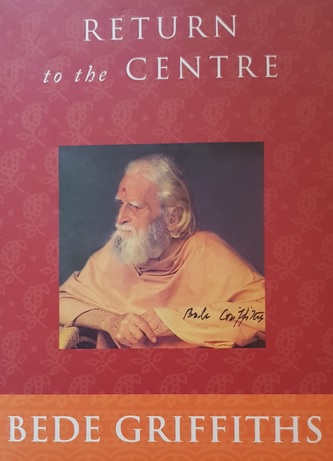
I have known Father Bede Griffiths for many years. The first time I met him was about 30 years ago in Tokyo. He told me that he was travelling to India to seek a Christian monastic way of life adapted to the Indian mentality. He had requested a three-year leave from his Benedictine community in England. He could, however, return to his original monastery if his efforts proved impossible. He had to provide for his own living, even if they wanted to support him with Mass stipends from England.
I met Bede Griffiths for the second time when I visited him in Kurisumala Ashram in the Kerala area. Here many descendants of those Christians who converted to Christianity at the time of St Francis Xavier (born in Spain in 1506 - died in China in 1552) still live. Later I stayed several more times in this ashram and also meditated there alone. During my last stay in Kurisumala, I asked about Henri Le Saux, the French Benedictine priest who, together with Abbé Jules Monchanin (1895 - 1957), had founded the ashram Shantivanam, the "Forest of Peace", in Tamil Nadu/ South India in March 1950. I was told that I had to hurry if I wanted to meet Dom Henri Le Saux (1910 - 1973), as he was travelling north for good in the next few days. I set off immediately and still met the Benedictine priest, known in India as Swami Abishiktananda. We talked about different ways of meditation, of course also about ZEN and his method. Henri Le Saux came to India in 1949 and became a disciple of Sri Ramana Maharshi (1879 - 1950). At that time, he was one of the most important sages in India.
Even before Henri Le Saux's death in 1973 in northern India, Fr. Bede took over the ashram Shantivanam in 1968. On my travels, I regularly and gladly stayed there. I was able to witness how the work developed and what attraction it had. The last time I stayed with Father Bede was in January 1985 and I held ZEN meditation classes there for a fortnight. I read his book "Return to the Centre" with great interest. The author has succeeded in a unique way in showing people today what religion actually is, where it comes from and where it is going. Many people in our time have many questions about religion and are looking for new answers. There is a change of consciousness going on that affects not only the individual but humanity as a whole.
Bede Griffiths has a deep understanding of Hinduism and also of the other great religions of India. He says that they all have the same centre, but it cannot be presented as such. The individual religions have to constantly reorient themselves because the general use of language changes with time. What was once expressed correctly no longer means the same thing today. We live in a time of change. This is especially true of the new physics, with which the mechanistic world view has lost its validity.
These findings also have an inevitable influence on religions. Today, science and religion can no longer be neatly separated. To exaggerate: the new physics also deals with methaphysical and thus religious questions.
I recommend this book to all people who are searching for religious experience and knowledge.
Tokyo 17 December 1986
- on the occasion of the 80th birthday of Father Bede Griffiths
Let the mind rest at peace.
The ten thousand things rise and fall while the Self watches their return.
They grow and flourish and then return to the source.
Returning to the source is stillness, which is the way of nature.
The way of nature is unchanging.
Knowing constancy is insight.
Not knowing constancy leads to disaster.
Knowing constancy, the mind is open.
With an open mind, you will be openhearted.
Being openhearted, you will act royally.
Being royal, you will attain the divine.
Being divine, you will be at one with the TAO.
Being at one with the TAO is eternal.
And though the body dies, the TAO will never pass away.
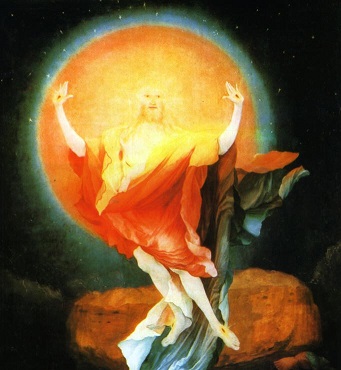
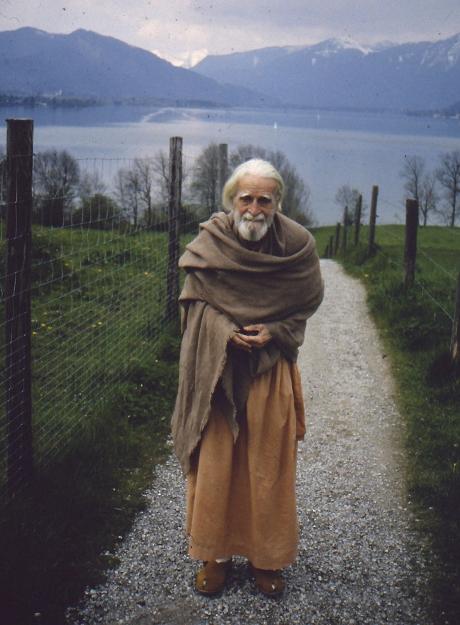
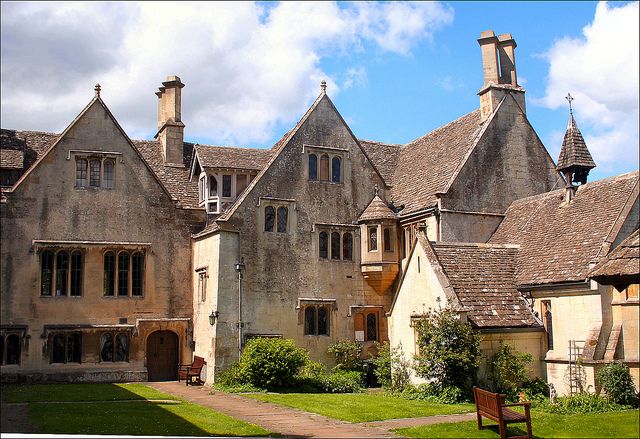
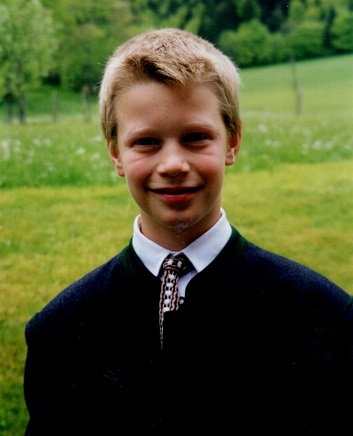
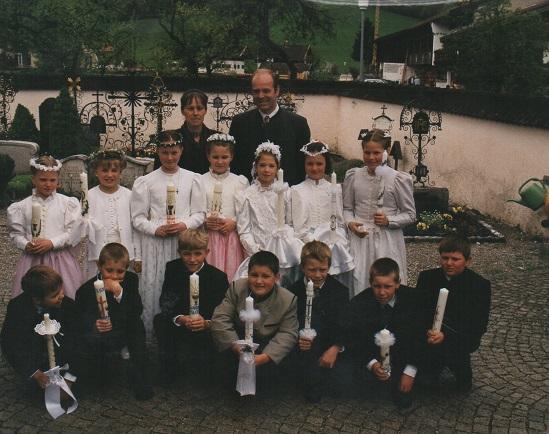
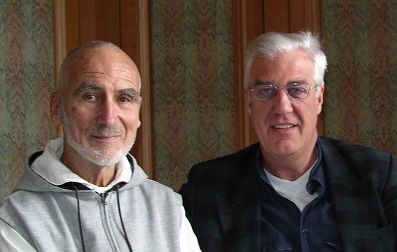
A reflection of the third zoom meeting of the Oblates and Friends of Shantivanam by Sister Judith Thackray
Across the globe, we belong to one another. We don’t have words sufficient to express the enormity of the human suffering we find worldwide at this time. We are perhaps waiting for our own personal revelation or conclusion to help us try to understand it—but most days, we begin and end each day, with our hearts feeling the heaviness of so much human suffering and sorrow.
Our minds reel with it all, so helpless do we feel to find ways fast enough, that will radically alter and change the course of things. We are being abruptly awakened to the fullness of the need to learn how to live together in an interdependent global society. We are awkward with this awakening, we are slow with it: we go in and out of an alternating denial that we really do need each other, in order to solve the huge problems of human life and ecological sustainability on this planet.
We share each other’s confusion as well as hopes, on the digital bridge that now connects our previously more limited and spacially bound lives. This is the”big screen” that sits behind all our smaller screens every day—the big picture that comes into our dreams and sometimes nightmares at night, and which equally unsought, occupies so many of our thoughts in the day.
This is the world environment in which the third zoom session for Shantivanam Oblates and Friends took place on April 24, 2021. This third session was divided into two parts: Part l for devotional prayer, chanting, music and meditation; Part ll for discussion and small group sharing.
Setting the scene for Part I
The attendees of the video session today live in many different countries worldwide.
As part I begins, it is about 2:30am in New Zealand and the perhaps first attendee of this April meeting has awakened from sleep. They sit in a room that has been darkened for the night, but now begins to glow softly as the computer comes on.
At the same moment, approximately 7:30am on the west coast of Canada, a second attendee has maybe had a quick breakfast, put the dog out, and brewed a cup of tea which is now being carried to sit beside a recently opened computer.
It is 11:30am in Brazil, an attendee is possibly returning home, after a morning of being outside in nature. They open their computer, inspired to share renewed feelings of peace and belongingness with their friends.
In the UK, Europe and Africa, it is mid-afternoon. At around 3:30 or 4:30pm, and before opening their computer, an attendee has perhaps finished the preparations for a shared meal later on with close family. They open their computer and join the session.
It is about 8pm in India, an attendee has probably finished their evening devotions, had a light supper, and are maybe putting a bookmark in a book in which they have been absorbed, while sitting quietly in their room. They get up, get a glass of water, and join a video session that will bring together many spiritual friends from all over the world. The forty-five minutes of devotions in Part I begin with the Gayatri Mantra and conclude with silent meditation, followed by arati with waving of light and ringing of bell.
Part II
After a brief pause to allow people who need to leave to say their goodbyes, Part ll starts with a reading from Shantivanam—a new beginning, by Fr Bede Griffiths.
Following the reading, there is a commentary by the abbot of Shantivanam, Fr Dorathick. Fr Dorathick describes the vision of Shantivanam as a Christian center of prayer, contemplation, and compassionate service and outreach. He also speaks of its mission to bring about a better understanding of the truth shared at the heart of all religions—and therefore a radical acceptance of the truth in every individual as well.
As Fr Dorathick continues to speak on the topic of the purpose of an ashram today, he describes how we are all on the same path for truth, the same search for peace. At Shantivanam, the members practice and extend a loving and inclusive care for all life in its sacred unity, in the name of Christ. People come to the ashram to experience the peaceful spiritual atmosphere and its natural surroundings; they stay for retreats of a few days and sometimes longer.
The truth which is at the center of all religions can be found through the contemplative or mystical dimension of spiritual life. Father Dorathick explains that contemplation is needed to lead us to this highest experience of unity. Kindness and compassion flow towards others as this experience beyond all names and forms—which Fr Bede calls the “infinite transcendence”— matures on the human level. Shantivanam was founded seventy years ago as a spiritual center for its monastic residents, but also as a living symbol of the perennial need humans have to inquire into the meaning of life. It is by finding the center, by going deeply inside, that we are able to begin to feel the presence of God, and to begin to understand the real purpose of our lives.
Following Fr Dorathick’s talk, small breakout rooms are created to allow attendees to meet each other and further discuss the quote from Fr Bede’s writing. Fr Dorathick has spoken with assurance that there is a continued commitment by the residents of Shantivanam to honor the original vision and sacred intentions of the founding fathers of the ashram, Fr Jules Monchanin, and Abhishiktananda, as well as the guiding universal wisdom of Fr Bede. At this point, attendees find their images enlarged and appearing on the screen with only three or four other attendees.
The atmosphere is suddenly more personal, more intimate as members share together from a diversity of ethnicities, countries, as well as spiritual backgrounds. After fifteen minutes of sharing in this way, participants in the small groups then reconvene in the main room for a general discussion of the topic until closing time. As the zoom session is now running a bit overtime, participants share informally, having enjoyed the entire experience very much. They are already looking forward to meeting together again next month.
We are the bridge
Men and women; laity and religious; sons, daughters, mothers, fathers, grandmothers and grandfathers—these have all come together today, united in the purpose of mutual spiritual enrichment, sharing and community. They form a human bridge; their countries span the world clock; their professions, personal histories, and current life situations illustrate a diversity of human life. They are a generational bridge, as well as a cultural and geographical one. Overcoming the restrictions and limitations of a pandemic, and the challenges of the online technology, the attendees leave the meeting with a deepened sense of belonging to each other, increased awareness of being a part of the enduring “experiment in truth” which is Shantivanam, and an augmented feeling of gratitude for Saccidananda Ashram in Tamil Nadu, India.
Om Shanti Shanti Shanti
—Sister Judith Thackray
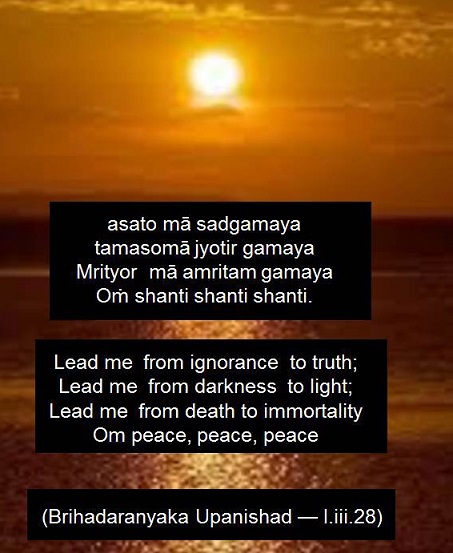

|
BODY SOUL SPIRIT.pdf Size : 3261.394 Kb Type : pdf |

|
COFF Pascaline 94. Geburtstag 22. Januar 2021.pdf Size : 2942.578 Kb Type : pdf |
6th January, 2002 - Feast of Epiphany
„Christ had to go through death in order
to enter into the new world, the world of
communion with GOD. We have to go through
death with him. It is the only way. This is the
challenge that faces the world today. We are
passing out of one world, the world of Western
domination, and entering a new age in which
the logical, rational mind of Greek philosophy
and Roman law, the economic and political order,
the science and technology of the West, will pass
away. Our patriarchal culture is passing away
at this present moment. Something new is
emerging. Nobody knows exactly what form it
is going to take. It is a moment of trauma,
of birth. We are waiting until all the present
forms and structures pass away, and we
shall see the whole universe in space and time
and the whole of humanity redeemed by Christ
standing in the fullness of reality.
- Bede Griffiths O.S.B. (1906-1993) -
On this special day, the appearance of Christ, the above prophetic message of the mystic and sage Bede Griffiths should be seriously considered as a divine promise that the Kingdom of GOD is already at hand for those who can see the invisible reality of paradise on earth.
OM SHANTI SHAKTI OM
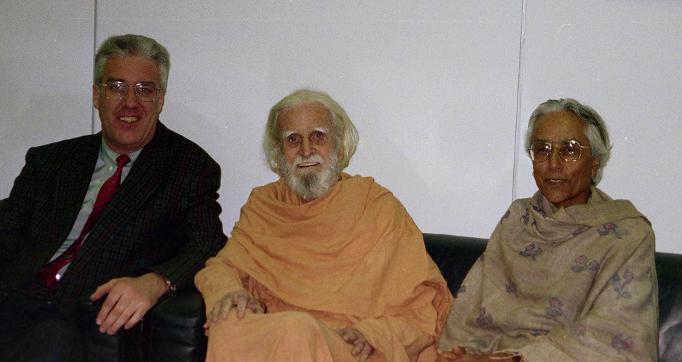
one can read in Chapter 7:: "The Gateless Gate -- The Gate of the Eternal Present".
"When I spent a year at a convent after a failed
relationship and family troubles, I read their works over and over. I had the
romantic idea that I was going through the dark night of the soul. But for me
it never ended, there was no big experience, no mystical illumination at the
end. I was somewhat depressed and lonely.
Then ten years ago, I made a retreat with Father Bede Griffiths, a radiant old Catholic monk
with an ashram in India. We talked and he told me that I had made up a whole
story of how the spiritual journey should unfold. Then he held my face in his
hands and beamed such love into me and said: "Why not be your unique self.
That is all God wants from you." I wept and I danced and laughed at all I
was trying to be. And now for years my life of prayer and contemplative
practice has continued in its ordinary way, but I am not depressed and I have
come to love my life. No great experience ever happened, but through loving
myself, everything changed.

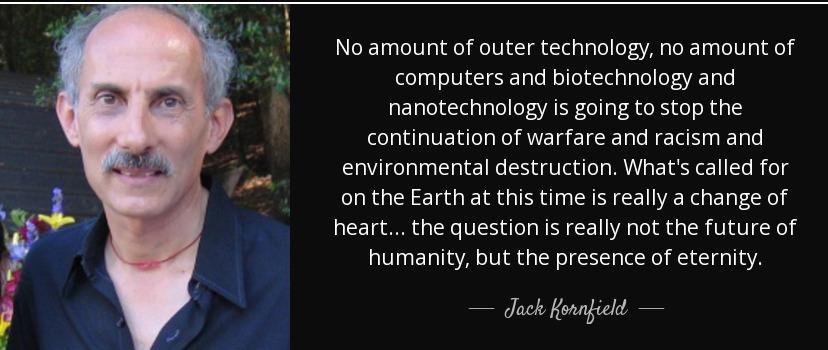
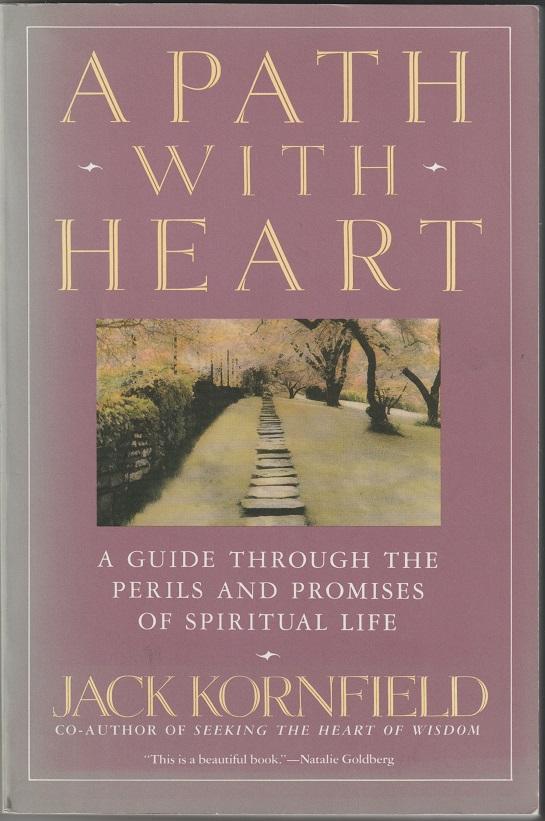
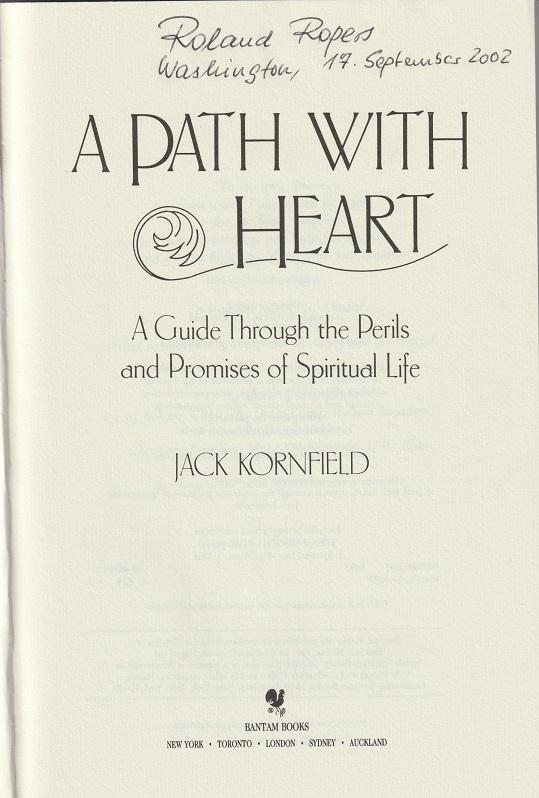

Wolkenspiegelung auf dem Starnberger See
Mirage on the Lake of Starnberg
Wir alle sind Wellen auf dem Meer.
We all are waves on the ocean.
Das Meer kann ohne Wellen bestehen,
The ocean can exist without the waves
aber die Wellen nicht ohne das Meer.
but not the waves without the ocean.
Auch der Geist des Kosmos
Also the Spirit of the Cosmos
kann ohne den Menschen existieren,
can exist without the human being
aber der Mensch nicht ohne den Geist.
But not the human being without the spirit.
Vor der Geburt und nach dem Tod
Before birth and after death
sind alle Lebewesen unsichtbar.
all creatures are invisible.
Zwischen den zwei
nicht-sichtbaren Bereichen
Between the two non-visible areas
sehen wir ihre Existenz als Form und Gestalt.
we see their existence as form and figure.
Der größte Teil des ewigen
Lebens bleibt unsichtbar.“
The greatest part of eternal life remains invisible.“
(Roland R. Ropers)
https://www.youtube.com/watch?v=aiEYQyUjAQA
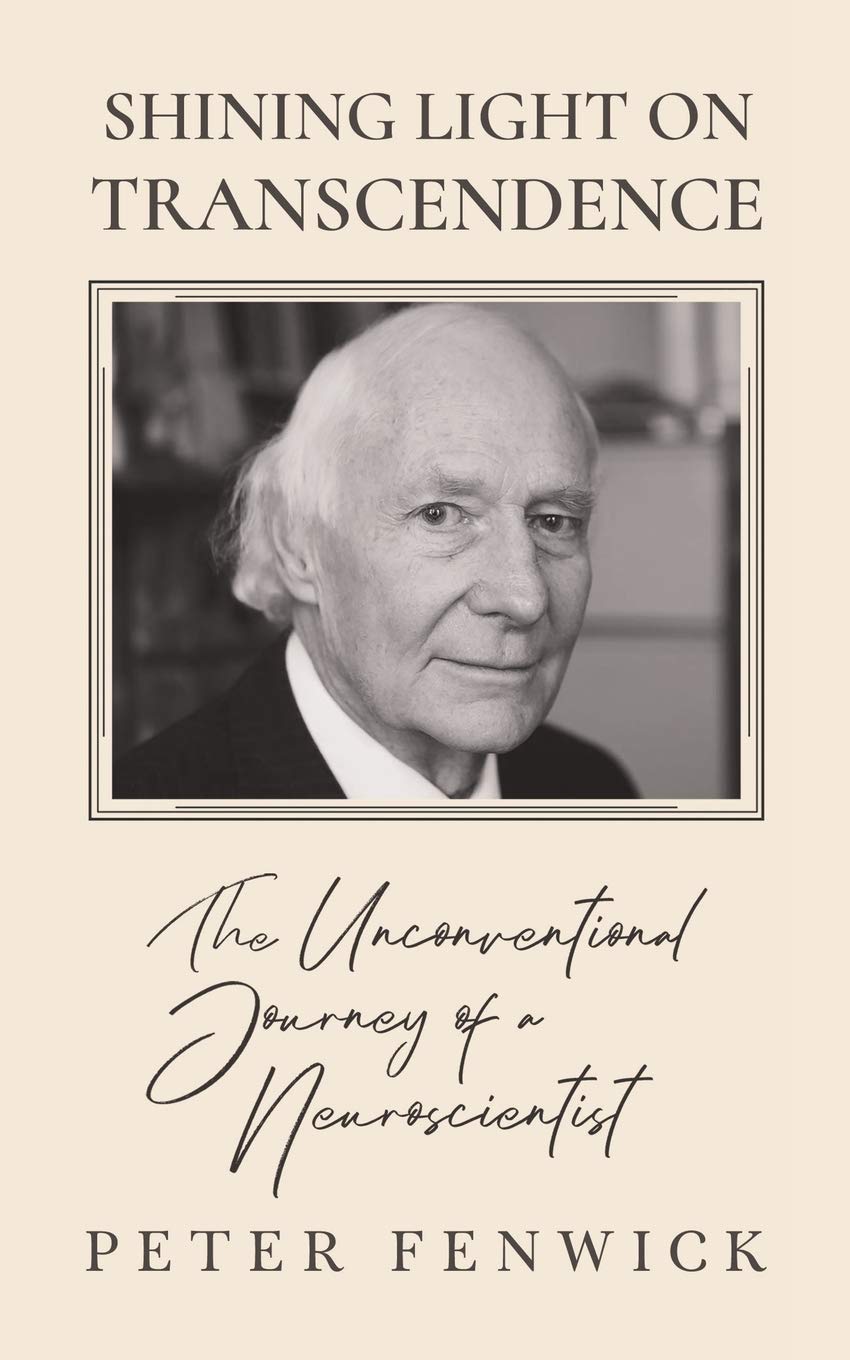
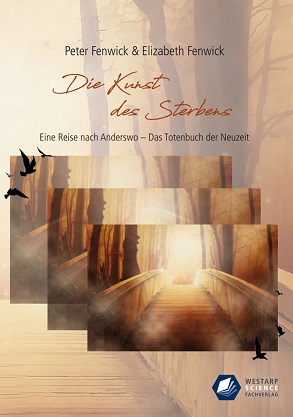
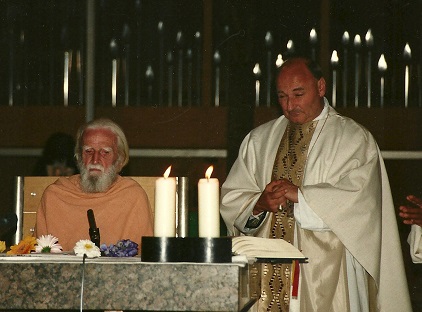
“Through the selected texts, guided by Dom Bede Griffiths, we may walk in humble search for the traces of the ONE DIVINE SPIRIT in all religions of the world”. (Abbot Odilo Lechner)
5 days later we travelled with Bede Griffiths to Berlin. It was his longtime wish to see the German capital once in his life.
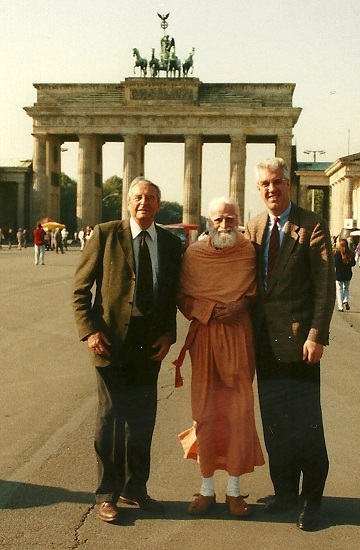

|
NASR Hossein Mystik-Kolumne April 2011.doc Size : 36.5 Kb Type : doc |
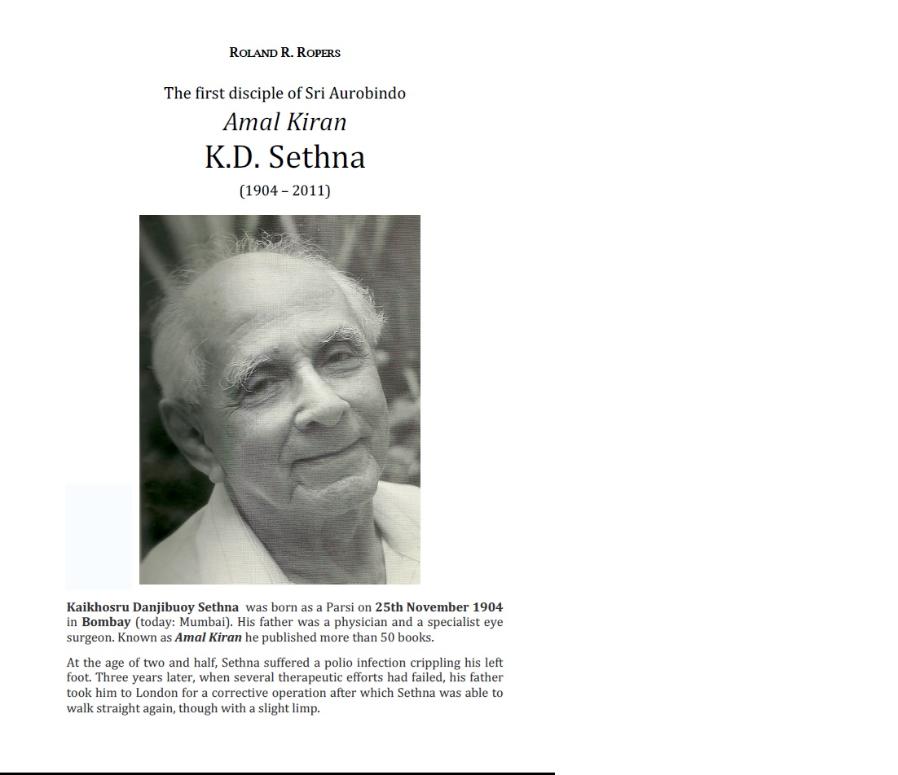
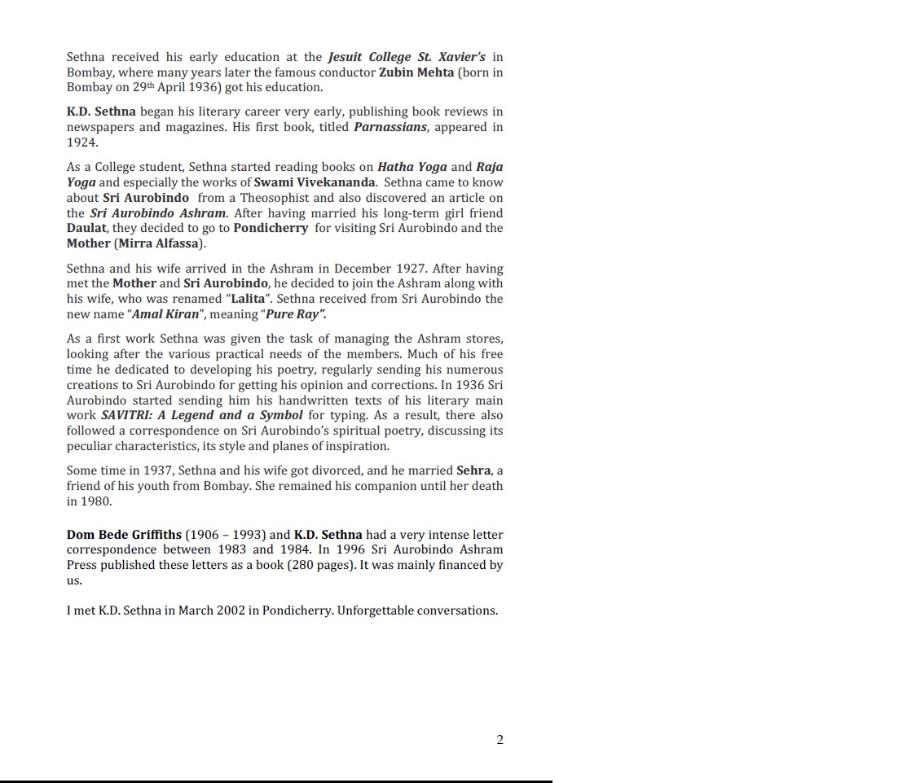
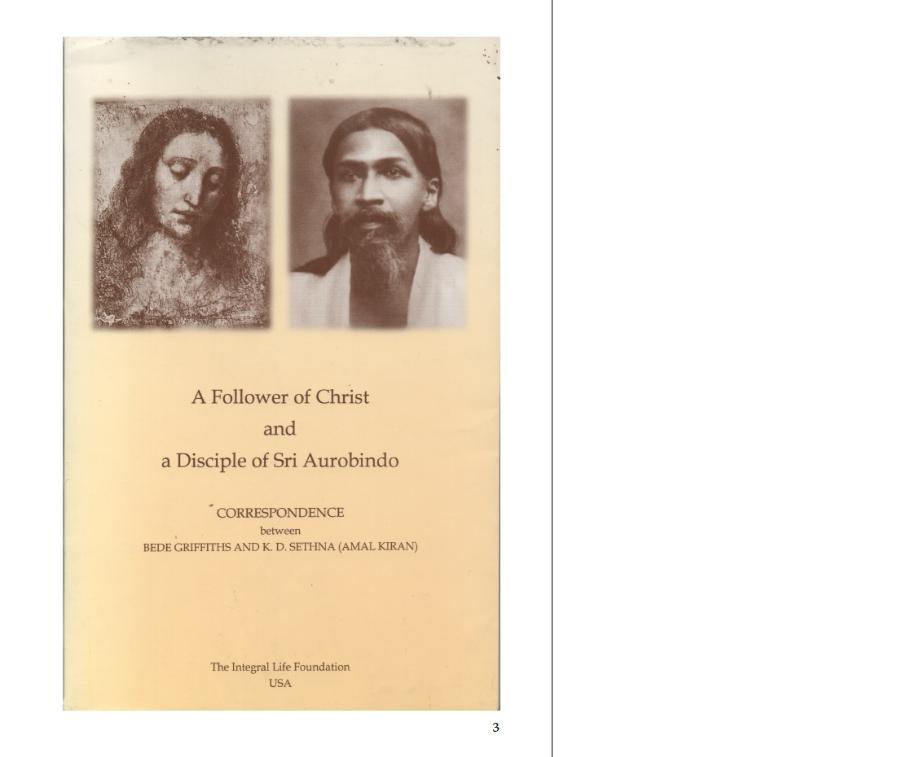
SHARING BY FR. SEBASTIAN THOTTIPPATT
The Core of Christianity
The core essence of Christianity is the Person of Christ who is the living, invisible presence of the crucified and risen Lord. The external trappings of the religion, namely: its liturgy, its hierarchical governance system, its laws and the centuries-old traditions do not pertain to its essence.
Christianity is a way of life rather than a religion. The way of life is following Christ as his disciples. In other words, the norm of action is to be rooted in Christ as pointed out in the gospel of John: “I am the vine and you are the branches. As long as I remain in you and you remain in me, you bear much fruit” (Jn.15:5). The Christian lives by the power that emanates from Christ who is the indweller through the Holy Spirit. Hence all efforts made to practice Christianity without a strong foundation in Christ, leads to nothing. It can either turn a person into a religious fanatic or a self-righteous and arrogant Christian...
Christianity in its essence is about a deep relationship with Christ that makes a person Christ-like in personality and behavior. Fr. Raniero Cantalamessa, the official preacher at the Vatican, speaking to bishops and priests of India, on a recent virtual retreat stated in unmistakable terms that “Intimacy with Christ is the secret of Christian life.” This entails a relationship with Christ that is “personal” as against “institutional”. In other words, Christians must relate themselves with Jesus as a person who is living and present to them in the here and now and not as a personality of the past. The reality of the presence of Jesus is as true as breath in our body. The awareness of it should become more and more intense as intimacy with him grows. This active relationship is to be cultivated and nourished through personal prayer. During these months of the Corona pandemic when churches and sacraments are out of reach for most Christians, the intimacy of our relationship with Christ has been invariably put to the test. We understand that being a Christian is by no means merely living by the rulebook or being faithful to customary practices. At the same time, it does not thereby imply a type of indifference to the commandments of God and religious exercises. On the other hand, the authentic Christian, while observing faithfully all laws, goes beyond the letter of the law to its spirit at all times.
Jesus told his disciples at the last supper: “I give you a new commandment, love one another. Just as I have loved you, you also must love one another. By this everyone will know that you are my disciples”(Jn. 13:34-35). It is obvious that all other laws are contained in this one law of love. It made St. Augustine to exclaim, “Love and do what you like.” It is by the practice of love according to individual circumstances that a Christian identifies himself or herself as a disciple of Christ. “No one has ever seen God, but if we love one another, God lives in us and his love comes to perfection within us.” (1 Jn. 4:12) “By this everyone will know that you are my disciples, if you have love for one another (Jn.13: 35). We cannot overlook the fact that in the history of the Church one can observe blatant violations of the law of love in various forms by the Church as an institution as well as by individual Christians.
The Sermon on the Mount is the core of the teachings of Jesus. Every part of it is a departure from the letter of the law to adhering to its spirit. Christ throws his focus on the spirit of the law which only can enable one to go the extra mile, turn the other cheek, pray without being verbose and showy, fast without ostentation, love even one’s enemies and allow us to be concerned with the other, sacrificing our own desires and comforts. On being asked by a Pharisee which is the greatest commandment in the Law, Jesus replied: “You shall love the Lord your God with all your heart, with all your soul and with all your mind. This is the first and most important of the commandments. But there is another one like it: you shall love your neighbor as yourself” (Mathew 22:36-39). Perfection does not consist in the perfect observance of all the laws but rather it manifests itself in one’s outgoing compassionate love towards the other, in the spirit of self-effacing humility. Unfortunately, more often than not, we aim at moral perfection in being externally correct in the eyes of others but care little about being animated by the spirit of Jesus in our attitudes and actions. Any imperfection or transgression of the law by someone is looked upon by us with contempt and the wrong doer is judged forthwith by the manner in which he or she is thought of, talked about and treated.
But we do not come by any instance of it in Jesus’ life. Not even Judas, who was known to him as his betrayer, was thrown out of the group of the apostles; Peter, who denied Jesus, was confirmed as Head of the Church after the resurrection when Jesus commissioned him to feed his lambs and sheep on his affirming unstinted love for the Master. On the other hand, there is an itching for perfection based on law in many quarters and we revert back to Old Testament demands for exact observance of laws. It is puzzling to see authority in the Church having often the tendency to come down with a heavy hand whenever it is thwarted or feels slighted? Is authority understood by those who wield it as being in control of people and situations? But the manner in which Jesus described authority and positions in the Church was quite the contrary. He told his disciples: “As you know, the so-called rulers of the nations lord it over them and their great ones oppress them. But it shall not be so among you. Whoever would be great among you must be your servant and whoever would be first among you shall make himself slave of all. For the Son of Man came not to be served but to serve and to give his life as a ransom for many” (Mk. 10.42-45)...
God wants to dwell not in buildings of bricks or stones cemented together by mortar but rather in human beings cemented together by mutual love, honor and respect...It comes about through the inner transformation that takes place when Jesus becomes the center of Christian life. “Because I live, you will also live,” said Jesus. “On that day you will know that I am in my Father and you in me and I in you” (Jn.14:19-20). We do not seek to have a life of our own apart from that of Christ because we grasp the reality of what he said: “Apart from me you can do nothing.” (Jn.15:5). It is an intimacy that is intrinsic to our own existence as Disciples of Christ. In his Priestly Prayer to the Father at the Last Supper Jesus prayed: “I pray not only for these but also for those who through their word will believe in me so that they may all be one, as you, Father, are in me and I am in you. May they be one in us so that the world may believe that you have sent me.” (Jn.17: 20-21)
Fr.Sebastian Thottippatt
Email: sthottippatt@gmail.com
Those who would like to receive the complete article can contact Fr Sebastian directly.

The world-famous Benedictine monk and mystical poet David Steindl-Rast has recently celebrated his 94th birthday.
He admired the spiritual giant Bede Griffiths who was 20 years older.
The book „EINE Welt - EINE Menschheit - EINE Religion“ (ONE World - ONE Humanity - ONE Religion), published in November 2007, is officially dedicated:
„To our son Benedikt Antonió Kumar, who was from early childhood in contact with the spirit of Bede Griffiths and of INDIA, as well as to our wonderful spiritual friends and companions on our path all over the world"
+ Dear Roland,
Because i was a bit sick, i am only now getting around to thanking you for your delightful gift. You certainly are prolific in spreading Dom Bede's message. How much good you are doing thereby!
May this New Year in your new setting
bring you continued good health and creativity.
With love, your brother David
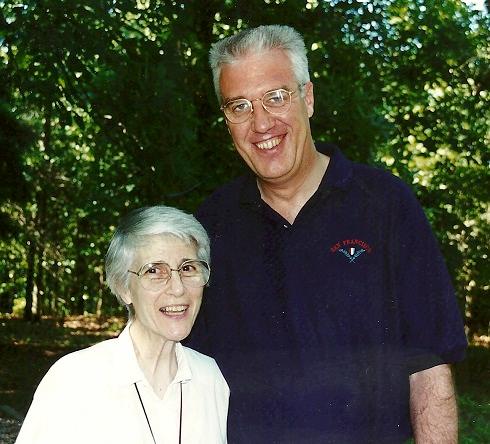

|
COFF Pascaline tribute to Raimon Panikkar.pdf Size : 1475.909 Kb Type : pdf |
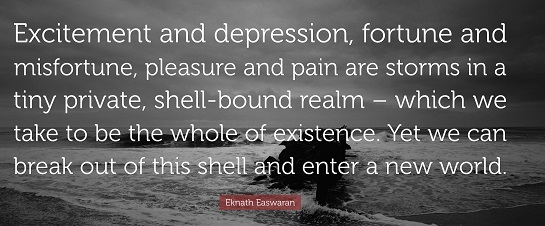
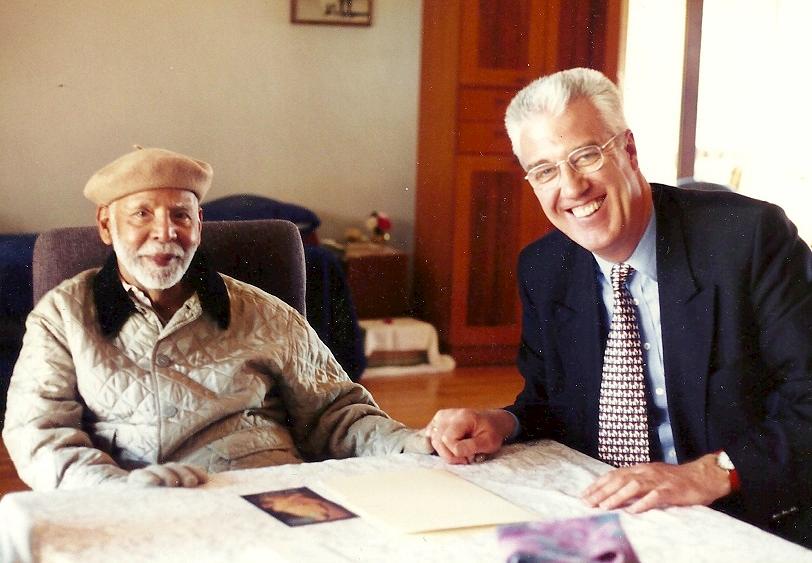
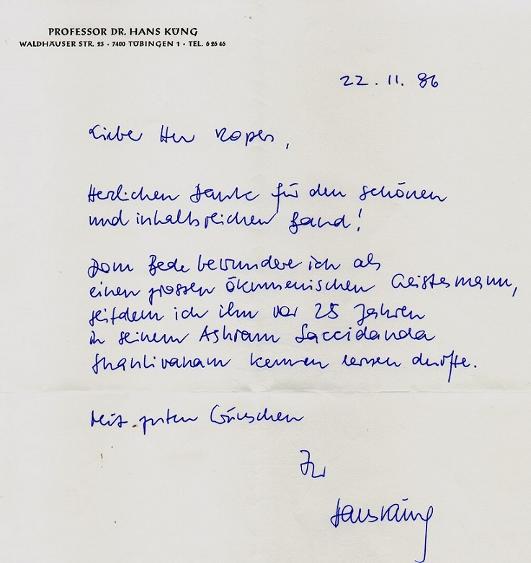
ROLAND ROPERS SHARES ESSENTIAL THOUGHTS OF BEDE GRIFFITHS - He made a very important distinction between meditation and contemplation - Roland
PLEASE CLICK ON PDF. FILE BELOW

|
SOCIETY for the RENEWAL of CONTEMPLATIVE LIFE.pdf Size : 11656.825 Kb Type : pdf |
Sharing by Roland Ropers:-
BEDE GRIFFITHS and world-famous Yoga-teacher INDRA DEVI, who died at the age of 102 in April 2002
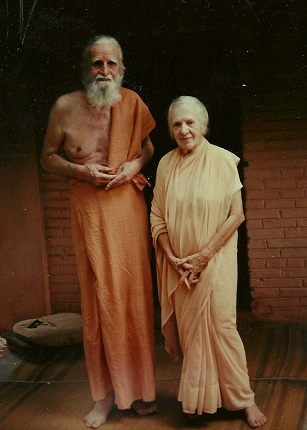
Eugenie Peterson known as Indra Devi, was a pioneering teacher of Yoga. She went to India in her twenties, becoming a film star there and acquiring the stage name Indra Devi. She was the first woman to study under the yoga guru Krishnamacharya at the Mysore Palace, alongside B.K.S. Iyengar and K. Pattabi Jois who went on to become world-famous yoga teachers.
Her popularization of Yoga in America through her many celebrity pupils in Hollywood, and her books advocating yoga for stress relief, earned her the nickname "first lady of yoga".
Eugenie "Zhenya" Peterson was born on May 12th, 1899 in Riga in the Russian Empire (now Latvia), to Vasili Peterson, a Swedish bank director, and Aleksandra Labunskaya, a Russian noblewoman who acted at the Nezlobina Theatre. She went to high school in St. Petersburg, graduating with a gold medal in 1917. Eugenie and her mother escaped to Latvia as the Bolsheviks came to power in 1917, losing the family fortune; in 1920 they moved to Poland, and in 1921 to Berlin, where she became an actress and dancer.
In 1926, attracted by a notice in a bookshop in Tallinin, she went to hear Jiddu Krishnamurti in the Netherlands.
Devi's fascination with India began at 15 when she read a book by Rabindranath Tagore and a yoga instruction book by Yogi Ramacharaka. In Berlin, she worked as an actor in „The Blue Bird“, touring Europe, and accepted a proposal of marriage from the banker Herman Bolm, on condition she could first go to India; he agreed and paid for the trip. She set off on 17th November 1927, crossing India from south to north, wearing a sari for the first time, sitting on the floor and eating with her fingers. She came back three months later, a changed woman, speaking only of India, and returned Bolm's engagement ring. She soon went back to India, selling her valuables to pay for the trip. At the Theosophicel Society in Adyar (Madras, now Chennai), dancing "an Indian temple dance", she met Jawaharlal Nehru, starting a long-term friendship.
In 1930, she married Jan Strakaty, a commercial attache to the Czechoslovak consulate in Bombay, and for some years lived as a society hostess there.
In 1939, she held what are believed to be the first yoga classes in China and opened a school in Shanghai at the house of Madame Chiang Kai-shek, wife of the nationalist leader and a new yoga enthusiast.
Her husband died unexpectedly in 1946, and Indra Devi returned to India, arriving in Bombay as the British Raj was coming to an end. She was hosted by the Maharajah of Tehri Garwhal at his palace in the Himalayas. Attracted by his reputation for having reached the end-state of Yoga, Samadhi, she went to Sivananda’s Ashram in Rishikesh. Not put off by his statement that he was busy and did not want students, she kept visiting the ashram until he agreed to teach her.
She was hoping to stay in Kashmir to teach yoga in a centre to be run by the Cambodian monk Bellong Mahathera, but her mother called her back to Shanghai, where Devi's house was being requisitioned by the army in the Chinese Civil War. Devi arrived there in time to sell many of her possessions before the house was taken over. She claimed later that she had wanted to return to India, but she obtained a United States visa, and sailed on a troopship to San Francisco at the end of 1947.
In California, assisted by her experience as a diplomat's wife with a patrician manner and the natural confidence of the wealthy, she met the author and philosopher Aldous Huxley and Jiddu Krishnamurti, giving her access to spiritually-inclined Americans. In 1948 she opened a yoga studio at 8806 Sunset Boulevard in Los Angeles.
In 1953 Indra Devi married the anthroposophical physician Dr. Sigfrid Knauer, born in August 1894 in Kiev/Ukraine. In the mid-1950s she was granted American citizenship and changed her legal name to Indra Devi. In 1960 she visited the USSR, seeing St. Petersburg (then Leningrad) for the first time in 40 years.
In 1961 Dr. Knauer bought Devi a large ranch near Tecate in Mexico; she opened the Indra Devi Foundation there. From 1966, she became close to the Hindu guru Sathya Sai Baba (1926 - 2011), and she traveled often from Tecate to Bangalore and Puttaparthi. She closed the Tecate operation in 1977 and moved with her very ill husband to Bangalore. In 1984 she and Knauer made a trip to Sri Lanka, where he died at the age of 90.
In 1985 she moved to Argentina . In 1987 she was elected president of honor of the International Yoga Federation. She died on 25th April 2002 in Buenos Aires.
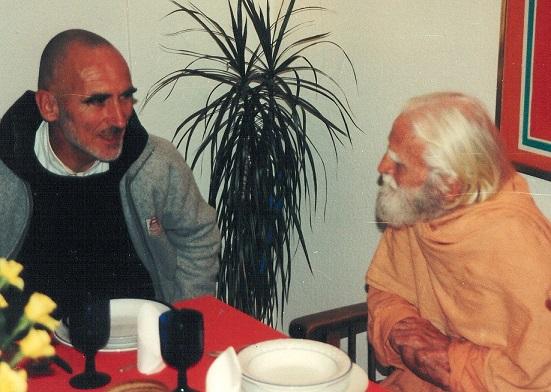
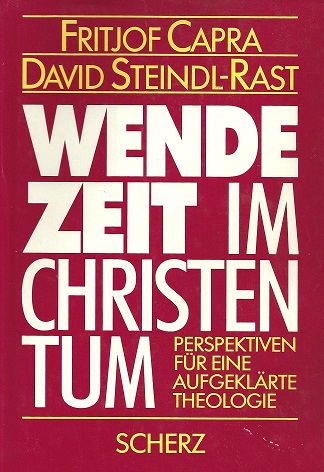
FROM
ROLAND ROPERS:-
There is so much
confusion in the world of body, soul & spirit,
that I do feel the necessity to clarify the very
important distinction.
My spiritual master
Benedictine monk Dom Bede Griffiths (1906 – 1993)
spoke in my presence in St. James’s Church,
Piccadilly, London, on 13th April 1992 and said
very clearly:
“The question of
reincarnation is of no importance for me. From my
experience reincarnation belongs to the world of
the psyche, the soul. I do not know what will
happen to the psyche after death; reincarnation
could be an answer to it. But you should realize
that you are not your body and not your soul. You
are ETERNAL SPIRIT and you need to go beyond the
concept of reincarnation. Ramana Maharshi would
have approved my opinion. It is your spiritual
reality which is important to focus on. Do not get
attached to the adventures of your psyche in the
past, in the present moment and in the future”.
Fr. Bede Griffiths
FROM ROLAND ROPERS:-
“Pentecost
is the moment when all the mysteries of Christ, birth, epiphany, death
and resurrection are all realised in the depth of the spirit within. It
is the moment of self-realisation, when all that has been experienced
externally is gathered in the Centre, and is realised as the way of
inner transformation, by which we pass continually from death to life.”
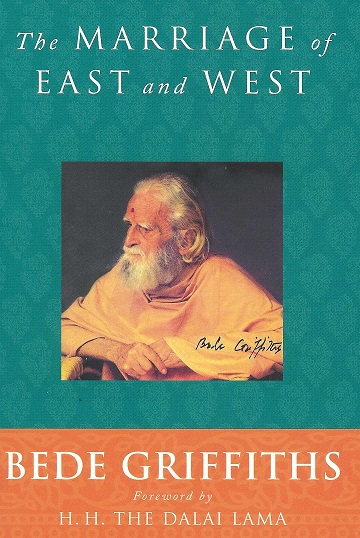
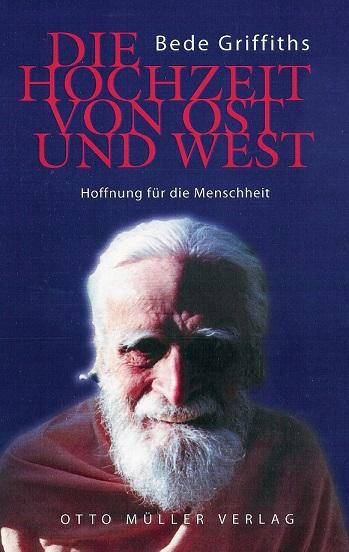
FROM ROLAND ROPERS:-
"GÖTTLICHE WEISHEIT" ("DIVINE WISDOM")
- Bede Griffiths visited the Benedictine Archabbey of St. Ottilien on 29th March 1992
Inspired by the beautiful nature in the Bavarian Tegernsee Lake District Bede Griffiths wrote on 30th March 1992 in Kreuth – viewing the Blue Mountains (Sanskrit: Nil Giri) – his courageous introduction to his new book Psalms for Christian Prayer:

|
GRIFFITHS Psalms for Christian Prayer.pdf Size : 3414.105 Kb Type : pdf |
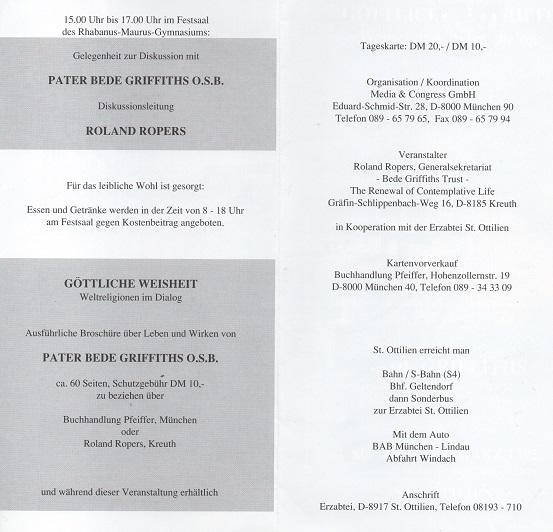
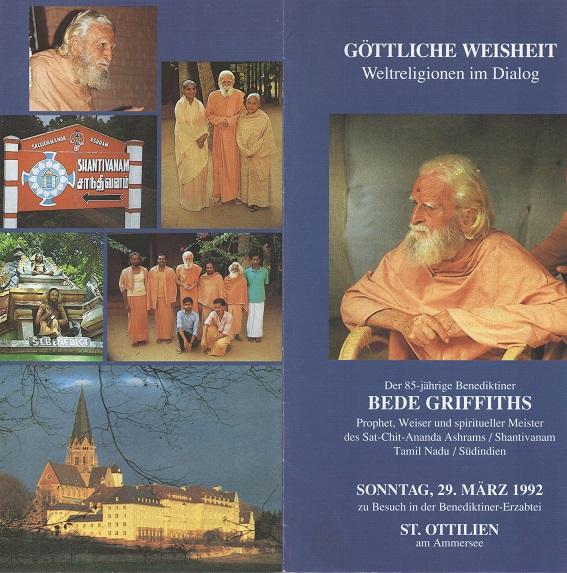
FROM ROLAND ROPERS:-
"We are facing right now new Tsunami destructions in South East Asia. The Divine Nature makes constant wake-up calls for our awareness in a world where we still think and believe in terms of growth and consumption. This concept will fail within short – many people in the world of consumerism are being psychically destroyed by the Tsunami-flood of the mass media".
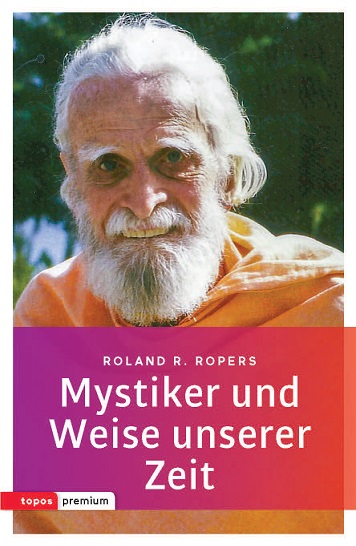

|
WINDEY and TSUNAMI 3rd October 2009.pdf Size : 4696.08 Kb Type : pdf |
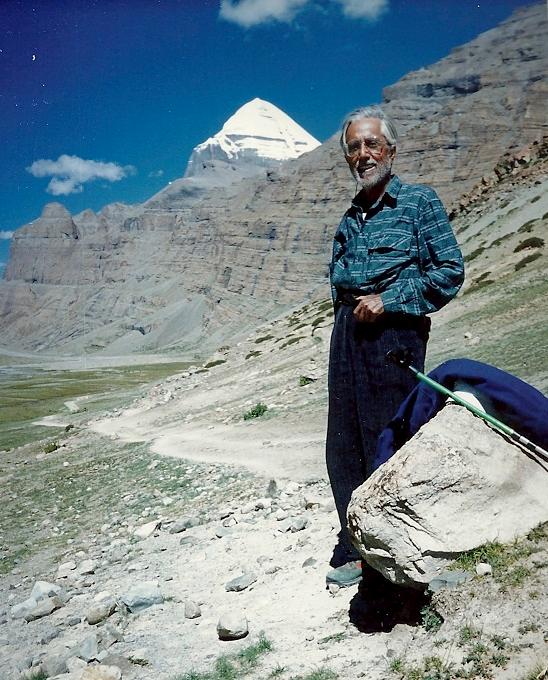
The experience of tempiternity is to live the present as intense experiencing of the moment without reference to the past that already was or to the future that will be. It is that present in which an action is truly realized as such, that is, as authentic and therefore “unique”.
Tempiternity makes manifest that being and time are interrelated in such a way that there is nothing that remains without being touched by time, not even eternity. At the same time, the temporal aspect of all reality is “only a partial aspect of the tempiternal nature of things”.
While temporality comprises present, past and future, tempiternity represents “the crystallization of this very moment without ulterior distensions”. It is neither eternity nor temporality. “Reality is not exhausted in temporality: it is not temporal now and then eternal later, but rather tempiternal” The future does not really exist; genuine hope, which is incorrectly called “of the future” must try to discover in each moment that fullness that we seek: it is possible to find the future in the present. “Time is the other face of what has come to be called eternity, so time and eternity form what could be called tempiternity. Eternity does not come after time – nor does it exist before. Man’s life on earth is not simply a pilgrimage toward God, reincarnation, or nothingness, but rather constitutes a rhythm in which every moment is inhabited by its other eternal face” And so, “If you are trying to live your life in fullness, you will have to live it today without waiting for tomorrow”, Raimon Panikkar writes after a long and perilous pilgrimage to Mount Kailash. “One must be ready to abandon history and to say goodbye to time”; it is about coming to discover that each step is the fulfilment of the journey, of the yâtrâ.”
Kultur- & Sprachphilosoph
Coaching for Original Source Consciousness
Sharing from Sr. Sanjeevani - Ananda Ashram
On meditation taken from the writings of Fr.Seraphion of Mount Athos.
WHEN YOU MEDITATE, be like a mountain immovably set in silence.
Its thoughts are rooted in eternity.
Do not do anything, just sit, be
and you will reap the fruit flowing from your prayer.
WHEN YOU MEDITATE, be like a flower
always directed towards the sun.
Its stalk, like a spine is always straight.
Be open, ready to accept everything without fear
and you will not lack light on your way.
WHEN YOU MEDITATE, be like an ocean
always immovable in its depth.
Its waves come and go.
Be calm in your heart and evil
thoughts will go away by themselves.
WHEN YOU MEDITATE, remember your breath:
thanks to it man has come alive.
It comes from God and it returns to God.
Unite the word of prayer with the stream of life and nothing will separate you from the Giver of Life.
WHEN YOU MEDITATE, be like a bird
singing without a rest in front of the Creator.
Its song rises like the smoke of incense.
Let your prayer be like the coo of a dove,
and you will never succumb to discouragement.
WHEN YOU MEDITATE, be like Abraham
giving his son as an offering.
It was a sign that he was ready to sacrifice everything.
You, too,leave everything
and in your loneliness God will be with you.
WHEN YOU MEDITATE, it is Jesus
praying to the Father in the Spirit. You are carried by the flame of his love.
Be like a river , serving to all, and the time will come, you will change in to Love.
Every mountain teaches us the sense of eternity,
every flower, when it fades, teaches us the sense of fleetingness.
The ocean teaches us, how to retain peace among adversities, and love always teaches us Love.
ARTICLE SHARED BY JUDY SIQUEIRA
The Spirituality of Shakespeare
SEE PDF FILE BELOW:-

|
The Spirituality of Shakespeare.docx Size : 28.115 Kb Type : docx |
ARTICLE SHARED BY ROLAND ROPERS
Benedictine monk & mystic HENRI Le SAUX (1910 - 1973) and the memorable letter from RAIMON PANIKKAR to his close friend
Kultur- & Sprachphilosoph
Coaching for Inner Universe Wisdom
SEE PDF FILE BELOW

|
LE SAUX AND LETTER FROM RAIMON PANIKKAR SHARED BY ROLAND ROPERS.pdf Size : 2438.418 Kb Type : pdf |
Some thoughts on a
hermit's life
from Sister Sanjeevani of
Ananda Ashram
--the virtue of the hermit is availability
--the hermit is separated from others in order to be related to all
--the hermit is often alone.
--the hermit must abandon opinions justifications and rationalizations
the hermit is reliving the exodus she/he travels in the wilderness by faith
--without being prepared to see the depths of personal poverty no one should venture upon this life
--the hermit is full of joy
--the discipline of the hermit is flexibility
--the hermit is always ready to break the silence to listen to the word incarnate
--the hermit should have ears not answers
--the hermit meets everyone every time with an open heart
--the hermit possesses very little but out of that store she/ he shares with everyone who comes: her/ his time her/his understanding her/his love
--the hermit is a spiritual friend
--the hermit lives in the presence of all creation
--the hermit loves herself/himself
--the hermit lives her/his life with poverty of means and poverty of spirit
--the hermit is an amateur
--the hermit is always engaged
--the hermit must be fearless
--the hermit doesn't defend herself/himself
--the hermit accepts what is given
--the hermit is listening for the small breeze
--be holy as god your father is holy
PETER FENWICK (born 25 May 1935) is a neuropsychiatrist who is known for his pioneering studies of end-of-life phenomena.
https://www.youtube.com/watch?v=78SkTuk8Zd4&feature=youtu.be
Dr. Peter Fenwick was the organizer of the conference "Light & Mystics - Mystics & Light" in April 1992 at King Alfred's College in Winchester. The English Benedictine monk & mystic Bede Griffiths (1906 - 1993) was the key-note speaker. Over breakfast on Sunday 13th April 1992 Peter Fenwick said enthusiastically that Bede Griffiths' talks were the most impressive ones he had ever listened to before. We will never forget these very inspiring and lightful days in England
COSMOLOGICAL-EVOLUTIONARY SPIRITUALITY AND WOMEN’S MOVEMENTS
Judith Siqueira
We have always known a cosmological spirituality in all religious traditions lived by mystics and expressed by artists. Yet, its understanding in the latter half of the 20th century has become startlingly clear, with the discovery by modern Science of the origin of the universe expressed in the Big Bang Theory.
With the Big Bang Theory showing an evolutionary concept of the universe, the most wonderful thing in Science is its cosmology, its basic model of the cosmos. It teaches that the awakening of consciousness is the next evolutionary step for humankind, that the laws of nature cannot be assumed to be permanent in an evolving universe, which Science since Newton always did, focusing on the physical dimensions of the universe at the cost of its human dimensions. Scientists now see the universe move in a biased direction towards increased wholeness, i.e. unity, orderliness (which includes random activity), creativity, and consciousness. Humans are that part of the universe able to consciously evolve. Eckhart Tolle says that “the awakening of consciousness is the next evolutionary step for [hu]mankind.”[i][1]
Parallel to the scientific discoveries of the Enlightenment that led to the 20th century discovery of the universe as cosmogenesis were a series of discoveries in Palaeontology, in fossils found in various strata of the Earth. For scientists, Palaeontology became an entrant into the transformation sequence of the planetary process. Suddenly with a shock of recognition, scientists discovered that humans were emerging from within this process. This shock of recognition that the human was integral to the natural world was limited during the Enlightenment to the physical structure of the human and did not significantly affect the basic issue of the human as knowing observer. In this respect the human still remained outside the realm of scientific inquiry. Science was unable to include the knowing subject as simultaneously the object known.[2] Eckhart Tolle says, “What a liberation to realize that the ‘voice in my head’ is not who I am. Who am I then? The one who sees that”[3] Expressing such conscious living, Emily Dickenson, the artist-writer said, “To live is so startling it leaves but little room for other occupations.”[4]
In the 21st century we see, the Universe Story, God’s Plot, the story of an evolutionary spirituality, consciously celebrating itself in human intelligence, which includes women. The 21st century is unique as a growing number of people are awakening to the truth that we are THE PLOT, the evolutionary process awakening to itself.[5] THIS PLOT IS OUR PATRIMONY. As we live the Plot, aligning our selves with it in the women’s movement we consciously appreciate and build our patrimony, the heritage of the next generation. Therefore, in this paper we focus on the women’s movement in India to see through its history the expression of a cosmological and evolutionary spirituality, a gift of the Plot. As we become aware of it in this kairological moment, we align ourselves with it consciously.
COSMOLOGY—THE PLOT
To live so startlingly that it leaves little room for other occupations is to live in awareness that the universe is not a thing, but a mode of being known through the Big Bang and evolution.
The earth has evolved in an extraordinarily unbroken sequence of events from the initial flaring forth to the beauty, fruitfulness and diversity of life on this blue-green planet all inter connected from the Big Bang until today supporting life and intelligent life often at almost zero possibility.[6]
Particularly striking in the emergence of the universe is the lack of repetition in its development. A fireball gave rise to the galactic phase and the first generation of stars. The hydrogen/helium percentage of gases in the universe only took place once. Later some of these gave rise to solar systems and planets, each different from the rest. The oceans only arose once. We find these crucial moments in a universe of unending diversity.[7]
For every billion anti protons in the beginning of the universe, there were just one billion and one protons. The billion pairs annihilated each other to produce radiation, with just one proton left over. A greater or smaller number of survivors would have made our kind of material world impossible or non existent. The laws of physics seem to be symmetrical between particles and anti particles. Why was there this tiny asymmetry which makes matter possible?!! [8]
In overwhelming astonishment at this astounding and humanly incomprehensible development scientist Freeman Dyson declared that it is a universe that seems to have known that we were coming and Physicist Fred Hoyle opined, “A common sense interpretation of the facts [of formation of matter] suggests that a super intelligent has monkeyed with physics”[9]
That the universe is the result of cosmic moments of grace, an original blessing, is confirmed by the mystics. “Our hearts were made for Thee And restless must they be, Until O Lord this grace accord, Until they rest in Thee”[10] We have what we seek. We don’t have to rush after it. It was there all the time, and if we give it time it will make itself known to us,”[11] and Tukaram, a Hindu mystic says: “In the deep sea of bliss the waves are of bliss; in the body of bliss every member is of bliss.”[12]
The universe seems to be telling us that this is the biased direction of increased complexity, unity, consciousness, and compassion in which it is evolving, from the grace filled cosmic moment of the Big Bang, the Alpha, towards its Omega. THIS EVOLUTIONARY DIRECTION IS THE PLOT, A COSMOLOGICAL AND EVOLUTIONARY SPIRITUALITY OUR PATRIMONY, WHICH HOLDS US IN MATRIMONY with itself.
Since life is, a delicate balance between the various forces maintaining and disturbing it, between perfect harmony and disorder, between creativity and chaos we as cocreators in our patrimony must move the Plot along. How do we do this in the women’s movement?
Unlocking the key of the Plot
“[T]he key to unlocking what is going on with history, creativity and progressive processes of all sorts is to see the state of completion at the end as a kind of higher dimensional object that casts an enormous and flickering shadow over the lower dimensions of organisation, of which this universe is one. For instance in the human domain, history is an endless round of anticipation: ‘The Golden Age is coming’; ‘The Messiah is immediately around the corner’; “Women are human beings”. All these intimations of change suggest a transcendental object as the great attractor in many, many dimensions, throwing out images of itself that filter down through lower dimensional matrixes [and known to us in its immanence]. These shadow images are the basis of nature’s appetite for greater expression of form, the human soul’s appetite for greater immersion in beauty, and human history’s appetite for greater expression of complexity”. [13]
Chaos is not something that degrades information and is somehow the enemy of order, but rather it is something that is the birth place of order”.[14] “The geneticist Theodosius Dobzhansky considers that the universe in its emergence is neither determined nor random but creative.”[15]
Having seen the cosmogenetic creativity of the universe we now try to fathom this cosmogenetic creativity in the women’s movement, the gift of the Plot, in the confidence of moving it towards fulfillment of the goals of the women’s movement, which is enabling women to live in dignity.
HISTORY OF THE WOMEN’S MOVEMENT
In our attempt to comprehend the women’s movement, a rough classification of it into global and Indian is assumed; global, meaning largely Western because as a colony, India was influenced by Western ideals, and after WWII the impact of the US was global, especially through its economic and military might.
Though the roots of feminism are located in early Mesopotamia, in fertility cults and goddess religions, in ancient Greece with Sappho, in the medieval world with Hildegard of Bingen, in the Bhaktis and Sufis of India, in its women warriors—the Rani of Jhansi and Sultana Razia Begum, in Olympes de Gouges, Mary Wollstonecraft, Jane Austen, Sojourner Truth, as foremothers of the modern women's movement, yet, it was not until the late nineteenth century that the efforts for women's equal rights coalesced into a clearly identifiable and self conscious movement, or rather a series of movements, that came to be known as the first phase of the women’s movement[16] revealing a conscious step at a communitarian level of women as humans.
In the US the women’s movement in its first phase of the 19th and early 20 centuries focused on women’s legal rights, such as the right to vote and little on abortion, birth control, and overall reproductive rights of women. Slavery was an especially formative influence. With WW1 women supported the national war effort making peace and disarmament their agenda. After the initial struggle and break through in the 20s women’s organisations stagnated for decades. Though many states after WWII extended the right to vote to women, the movement had reached its first cycle by the 50s and a new generation of women emerged in the late 60s and 70s to restore its momentum and to redefine its aims, reminding us that a lull and chaos are not confusion but stepping stones in the bedrock of creativity and order.
Though beginning in the US, second wave feminism [17]rapidly spreading across the world attempted to change the recipe of the cake more than its size. It broadened the debate to include sexuality, family, the workplace, reproductive rights, legal and even de facto inequalities. This wave unfolding during the anti Vietnam war was strongly influenced by it, the civil rights movements, the growing self-consciousness of a variety of minority groups around the world, and the New Left making it increasingly radical. In the late sixties Coretta Scott King assumed leadership of the African-American Civil Rights Movement following the death of her husband, and expanded the movement's platform to include women's rights.
A brief comparison of the two waves The first wave of feminism was propelled by Western white middle class women; the second phase by women of colour and women in developing nations, seeking sisterhood and solidarity, claiming "Women's struggle is class struggle”. Feminists spoke of women as a social class and coined phrases such as "the personal is political" and "identity politics" in an effort to demonstrate that race, religion, class, caste, and gender oppression are inter related. They strove to rid society top-to-bottom of sexism, from children's cartoons to the highest levels of government.
Though the second wave has quieted down in the public forum it is alive and incubating in the academy, giving rise to further waves, especially in academia. There have always been many feminisms in the movement, not just one ideology, and there have always been tensions, points and counter-points. The political, social and intellectual feminist movements have always been chaotic, multivalenced, and disconcerting; it's a sign that they are thriving.
The first phase of the Indian Women’s Movement, began in mid nineteenth century in pre independent India with male European colonists speaking out against sati and other social evils. Western ideals of liberty, equality, and fraternity were imbibed by the Indian educated elite. [18] Also, the important and historical milestone of the Indian Mutiny of 1857 against the British inspired many important political and social reform movements. Therefore, the women’s movement in India began as a social reform movement in the nineteenth century restricted to upper caste Hindus and left the patriarchal structure untouched. Unlike the Western feminist movement, India's movement was initiated by men, and later joined by women, who due to opportunities of formal education and social status were elitist, living according to caste rules, maintaining the status quo. Social services were provided by the AIWC, (All India Women’s Conference, an arm of the Congress) theAnjuman E Islam and the YWCA, the latter being multi religious, its members the wives of politicians and bureaucrats. The AIWC and the Anjuman E Islam fought social evils like child marriage and provided basic skills like tailoring, embroidery, cooking, helping women to become efficient home makers. From the YWCA the first generation of teachers, nurses, secretaries, skilled women workers arose. The enormous literature in regional languages testifies to their path breaking efforts. Differences in eating habits, dress-code and language barriers prevented these organisations from collaborative ventures though their leadership was from the economically better-off section, perhaps because of it[19].
It was women, who forced Gandhiji to include them in the Quit India movement of 1942. Female relatives of the Congress gave up purdah participated in public functions and experienced prison-life, which enabled them to take political risks and emerge as powerful politicians, educators, public servants. Others became enlightened home-makers with a strong commitment to the education of their daughters.[20]
Women's participation in the struggle for freedom also developed their critical consciousness about their role and rights in independent India, resulting in the abolition of all forms of discrimination, the introduction of the franchise and fundamental rights to all, in the Indian constitution. With independence and the constitutional guarantee of liberty and equality to every citizen there was a lull in the women’s movement as there was no reason for mobilization. Women’s organizations like the AIWC reoriented themselves as social organizations providing social services like running schools and hostels but were not involved in any struggle oriented activity.[21] Writings by and on them could be used with those by women in freedom movements of other countries to find trends and developments that are epigenetically trending.
The second phase in India arose as the implications of the fundamental right to equality began to be worked out with the Mathura rape case, the CEDAW Report at the end of the women’s decade, the anti price rise, anti alcoholism and anti wife beating movements. Many of them were led by a radical left, at its peak in the sixties. This phase was a watershed in the history of the women’s movement in India when the analysis of women’s oppression gave rise to new forms of action resulting in a change of macro political processes. Subaltern masses in the Naxalite movements of Kerala, W Bengal, Andhra, Bihar, took militant paths guided by different political ideologies. In 1974 the Navnirman movement of Gujarat, was replicated in Bihar as the Sampoorna Kranti Movement under the leadership of a Gandhian, Jai Prakash Narayan. These movements were a middle class upheaval against corruption, price rise, unemployment, speculation, hoarding, black-marketeering. Lop sided development serving the interests of moneylenders, contractors, and indigenous industrialists were challenged by tribals in Chhatisgarh, Singhbhoom, Bhojpur, Srikatulam, Chandrapur, Dhulia and in pockets of the North Eastern states. In 1974 a drought paralysed normal agricultural activity. Tribals in Dhule (Maharashtra) demanded an Employment Guarantee Scheme, an historic demand. It revolutionized the thinking of workers about the responsibility of the state during a crisis. In the Himalayas landslides and massive scarcity of fuel, fodder, water, seasonal floods, deforestation gave rise to a Gandhian movement known as the Chipko Movement, because women hugged trees preventing their felling. The unprecedented strike of the railway workers was proof of the collective strength of the working class in the political field.[22]
Mrinal Gore, Ahalya Ranganekar, Manju Gandhi and Tara Reddy with women activists and intellectuals in a united front formed the Anti Price Rise Women’s Committee in Maharashtra. They organized direct action against the creators of artificial scarcity of essential goods. Thousands of the poor joined the struggle. Living a simple life style, Mrinal Gore, Ahalya Rangnekar and Manju Gandhi, were singularly placed as role models to women of all classes and backgrounds as they related micro issues to political reality [23]
Despite being women-centric, some wonder whether the movements of the sixties and seventies should be considered anti-patriarchal or not. An example—an increase in domestic expenditure was the concern of women rather than men. In such agitations women seemed to have accepted that the family was woman’s sphere and their role as consumers rather than producers was reinforced. But, collective public action was involved on the part of thousands of women in these movements and such collective action by women poses an implicit threat to patriarchy. Also, these protests allowed anti-patriarchal sentiments to germinate as they emerged in the autonomous women’s movement in the late seventies. Feminist class-consciousness in the 1970s was accompanied by a heightened awareness of the innumerable inequalities in India, both, between men and women and between women themselves.[24]
While these movements challenged male control or oppression, they did not demand parity or equality with men, nor did they struggle against sex based definitions of the ‘roles’ of men and women, or the codification of biological difference in social practice. To this extent, they did not display the tension between sameness and difference characteristic of feminism. In fact, most of them appeared directly or indirectly to affirm the principle of complementarity between the two distinct biologically defined areas of masculine and feminine, but opposed practices of privileging men over women. It is in this sense that they have been described as anti patriarchal.[25]
Though the report Towards Equality on the status of women in the early years of the last quarter of the 20thcen highlighted a declining sex ratio and the marginalization of women it did not throw light on violence against women in civil society and by the custodians of law and order. Through their work and from the late seventies women scholars and activists examined the role of women in the un/organised sector--tribals, peasants, construction labourers and their children, in areas of health, education, housing, religion, personal law, sexual exploitation, politics, law, agriculture, and all forms of violence against women in domestic and public places. These issues were depicted not only in discussion forums, seminars and `serious’ articles but also in the popular media and art. Women, themselves having identified the sources of their problems and indignity--- the structure of land-rights, wages, employment, security at work-place, alchoholism, wife beating, availability of water, destruction of nature, oppression and exploitation of the Dalits (the untouchables) and the working masses, began to acquire an organisational platform, a language, a collective identity and legitimacy they did not have earlier. This widespread, open discontent expressed in action developed into powerful organisations throughout the country. .
In India by the late 20th century women began to demand the power to decide their own lives. Over the last one hundred and eighty years, the focus of campaigns for an improvement in women‘s lives changed from needs to rights and within this from the restricted right to parity in selected areas to the larger right of self determination with mutuality in community, or individually when this was not possible due to a feudal, patriarchal structure.
This was evident as Manushi and Women’s Studies Centers were launched in the last quarter of the 20th century with a participatory, experiential focus in methodology. This emphasis on participation and experience with a linking of Women’s Studies and grass roots women’s movements helped to understand the developmental process that bypassed women as it identified sexual bigotry in textbooks, science, technology, media, health, housing and violence– domestic and social, saying that the personal is political. Women organized and participated in conferences, acting and writing the words and music of songs ballets, skits, jokes, in plural lifestyles and multilingual dialogues making such conferences trend setters, and a possibility for women from various political moorings to live and work together democratically during the conferences finding enrichment in each other. Consequently they would often be invited as resource persons on issues like draught, communal and caste riots, Bhopal gas tragedy, income generation schemes, appropriate technology, family planning etc. Thus research and action were in interaction for the liberation of women.[26]
The interaction of research and action created a new cadre of women intellectually alert, politically articulate and well informed having no male bosses to curb their initiative and confine them to routine activities of fund-raising, translating, typing, posting, cleaning and cooking. This strengthened different classes of women in their commitment to women. They acted on their learning of patriarchy in personal and public spheres, maintained their political autonomy and organizational identity, kept in touch with each other through small publications in English and the local languages, and organized small meetings in private spaces.
The women’s movement endured dreadful belligerence from society in general and especially from political parties ensnaring people for block-votes. Personal laws being knit with religious identities the secular women’s movement had to face immense rancor from the elites of different communities, Having learnt from their experiences in the seventies that habitual violence could only be encountered on a highly sustained basis they were ready by the 80s for feminist institutional structures. Victim baiting, double standards of sexual morality, sexist remarks and humour from the police, medical and legal personnel, the media and general public with caste, class and communal biases resulted in the eighties in a struggle for legal reforms and attitudinal changes for which public education through audio visuals were used for attitude change, shelters for battered women created with legal aid for women in areas of divorce, maintenance, alimony, property, child custody, personal and customary law. Women’s groups (Saheli, Delhi; Vimochana, Banglore; and Forum against Oppression of Women, Mumbai) and human rights lawyers’ (The Lawyers Collective, Mumbai and Indian Social Institute, Delhi) prepared drafts containing technical detail of gender just and secular family laws.[27]
With the end of the 20th century and the beginning of the21sta process of globalization saw vast economic changes sweep the country with social change unable to keep abreast of it. This resulted in different geographical parts of the country and sections of people developing at different rates and led to increased socio-economic inequality that resulted in newer forms of violence against women, making immediate issues like equal wages, violence, fundamentalism, life with dignity very acute.
Therefore, the Indian Women’s Movement in the 21st century battles many of the old problems, while confronting problems of voyeurism, stalking, acid attacks, rape in marriage and by the armed forces, the sex ratio, aggravated by a right wing government in the Centre and in most states. Also mind sets do not change with law or mass protests but only when women and men at personal levels are aware and accepting of their biases and prejudices. Science shows that mindfulness meditation is the best way of doing this.
The above very brief history of just two waves of the women’s movement shows how history is trending, that the trend has been one of greater recognition and acknowledgment of the human dignity of women as they too are in the image of God. To further confirm or disprove this trend we may also look at writings by and on key women (Mary Wollonstonecraft, Kamaladevi Chattopadhya), different women’s conferences, works of art by and on women to understand feminist issues in different times, places, cultures and phases of the women’s movement. Similarly the Christian Women’s Movement in the local and universal church may be researched.
I am unaware of research on the Christian Women’s Movement in India. The following is some data about it.
In the second half of the 19thcentury well before independence single young women like Edith Mary Brown,[28] Cynthia Farrar,[29]Martha Mandeville, Josephine Chapin came to India to serve as missionaries. The general policy was for a preference for ordained and married men. But women were valuable among Indian women and because Christian young women were being educated to become wives of Indian catechists and teachers. Yet the educational and medical institutions that women started were an immediate success in conflict with mission policy which was not to civilize, but to plant the church. In setting evangelizing against civilizing, and subordinating education to direct evangelism, women were kept in a dependant role in the task of mission. Conversion, however, was a path to upward mobility for low-castes and untouchables ,informed by both, elite Sanskritic customs and Western Christian discourse. The conversion policy divided the church along caste lines. It led to the movement of people “up” in expanded opportunities of economic, political, and social power, but also and perhaps more importantly as being less subject to having power exercised over oneself. The creation of a new, "respectable" community identity was central to this conversion process, validated by the reform of gender relations, expressed in ideals of femininity and masculinity in the areas of marriage, domesticity, dress, paid work. Ruth Pfau of Pakistan and Mother Teresa of India are the 20th century face of Edith Brown and company without the conversion component.
The following section is purely experiential and refers only to the Catholic Church.
As the secular Indian Women’s Movement coalesced only in the late nineteenth century into a clearly identifiable and self conscious movement so too did the Christian Women’s Movement which began in the Catholic Church with the publication of Women in Church and Society by Satprakashan, Indore, India, in the late seventies. Written by Jessie Tellis Nayak, Anna Alexander and Stella Faria, they followed it up with Christian Women in Church and Society in the early eighties with the same publisher. The first publication led to the creation of WINA (Women’s Institute for New Awakening) by the above three and Frances Yasas, who had simultaneously begun Streevani (Voice of Women) in Pune in the early eighties. These were faith based autonomous women’s groups. The aim was gender change in the Catholic church. Members of these groups deeply rooted in faith, were professional and lay, many single out of choice.
WINA was made up of Christian women, though largely Catholic. Theoretically it was all India, in reality limited to the big cities of Mumbai, Pune, Bangalore, Mangalore, because the core group resided in these cities. The focus of WINA was a change in status of women in the Catholic Church through a training in Feminist Theology. An important means towards this end was a series of three workshops held every year in the 80s organized and conducted by WINA, in Pune, Mumbai and Khandala, at which members researched and presented papers written by them on gender related theological topics. Women in the Netherlands saw a report of this and asked to come to India on a three week exposure programme which WINA organized for them. Appreciating this, they invited and organized a three week Dutch exposure programme for WINA in the Netherlands. Regular news letters were circulated and mailed to members and others, with numerous articles written and publications brought out through participatory research and oral history, some of it published by IGI, the then editor of IGI giving WINA the opportunity to edit one issue. A footnote lists a few of these publications.[30] Even a 90 minute film Bai was made, directed by Sumitra Bhave. Meetings were held generally in Pune or Bangalore twice a year, though members met informally very often, supporting and stimulating each other, as they shared their work and personal experiences of patriarchy within the biological and Christian family.
Streevani, Voice of Women, was a secular group founded primarily by Frances Yasas and supported by Fr. Engelbert Zeitler SVD[31] and Jessie Tellis Nayak, with a few others like Stella, Anna, and Crescy John, who formed the early core group. Frances Yasas, an American citizen, having done her doctorate in Social Work on Gandhiji, (Jessie had also done her doctorate in the US and she and Frances were close friends since those days) had worked for the UN in South and South East Asia for many years, had a passionate love for India and on voluntary retirement started Streevani initially based in Ishvani Kendra, Pune. Jessie had worked in the ISI Delhi. Jessie and Frances having been involved in Social Work and Frances in the UN, they had contact with other Indian staff of the UN (one of them being P D Kulkarni) and Tata institute of Social Sciences Mumbai (one of them being Grace Matthews), who formed the governing body. Streevani now lives in a new avatar. With a sister-lawyer heading it, the focus is on awareness raising of poor women and legal aid to them.
The CBCI (Catholic Bishops’ Conference of India) held a National Consulatation in Mumbai in Oct 1992. It drew up guide lines for the Womens’ Desk it set up. Sr. Cleopatra, then President of the CRI (Catholic Religious of India) was its first secretary, followed by a lay woman, Virginia Saldanha. After her, only sisters have been appointed by the Bishops. Dioceses too must have a women’s cell. A lay woman, Raynah Braganza Pasanha heads the women’s cell in the diocese of Pune. Its goals are awareness of issues faced by girls and women; women in scripture; Church teaching on women and girls. She is much hindered by finances and the patriarchal values of the clergy in her work in the diocese.
The National Consulatation of the CBCI also caused aware and alert women in Bombay to start an autonomous women’s group called Satyashodak. They meet regularly and have been able to keep the spark of awareness and alertness burning within themselves, growing in awareness of social issues, having contact with secular autonomous women’s groups in Bombay, they raise awareness in the general Christian public through talks and conferences in the parishes of Mumbai. Many of them are invited to other parts of the country.
The IWTF (Indian Women Theologians Forum) was started by Virginia Saldanha as Executive Secretary of the CBCI Commission for Women from 1998 to 2004. The first meeting of women theologians was held in Pune in 2001 at Ishvani Kendra, supported by the CBCI Women’s Commission. The second meeting too was supported by the Commission; thereafter the Forum became independent. Members meet every year, around a theme, their aim being to grow in theological awareness. Every meeting ends with a statement published in Catholic papers and journals.
WINA spawned WORTH (Women of Religion Theologising). The liturgy being in gender biased language they published two books of liturgical services from a gender free perspective. They would meet specifically around gender problems related to women of religion.
WINA is dead as are many of those who started it, but the seed it sowed has sprung into a mustard tree, with immensely strong branches.
WOMEN MOVING THE PLOT - AN HERMENEUTIC
A study in epigenesis is a diatopical hermeneutic as the distance overcome is not only temporal, within one broad tradition, but between two or more cultures or/and religions, as this paper has presented. It involves an understanding of the other without assuming that the other has the same basic self understanding as one has of oneself[32]. Thus it develops the ultimate human horizon, a horizon of human life based on human dignity which is true order and in which the women’s movement grows through many ups and downs. Karl Jaspers says, “... If there is an axis in history, we must find it empirically in profane history, as a set of circumstances significant for all men [humans], including Christians. It must carry conviction for Westerner, Asiatics, and all men [humans], without the support of any particular content of faith, and thus provide all men [humans] with a common historical frame of reference”.[33]
Scientists see the universe move in the biased direction of increased wholeness and the history of the women’s movement in the country and in the church reveals an on going growth in this biased direction of wholeness for women as persons. Today the women’s movement is called to take the next evolutionary step in an awareness of a global arousal of consciousness as it strives to break the glass ceiling for the mass of women. This step is the sensus fidei of the community, a gift of the Plot, a cosmological and evolutionary spirituality gifted, lived and expressed in the history of the women’s movement which is secular and spiritual, and so non dualistic. How does the biblical message express this?
We shall look only at Miriam, the leading lady of Exodus, who moved the Plot but was also struck with leprosy and died before entering the promised land. Miriam and Aaron spoke against Moses (Num 12:1-2), yet Miriam’s punishment was far greater than that of Aaron’s. Her grumbling against Moses, angered God but not Moses as Num 3 says that Moses was very meek and NUm 12;29 says that Moses wished the Lord would give the Spirit to all when Eldad and Medad were defiantly, prophesying in the camp. Besides Moses very promptly in response to Aaron’s pleading asked God to heal Miriam. The text seems to depict a patriarchal view of God.[34]
Patriarchal writers considered Miriam’s sin far greater than Aaron’s. Though she is appreciated for her initiative in saving the baby Moses, she is condemned for her initiative in challenging Moses. In this challenge Aaron was a passive accessory rather than an active co-agent, the punishment falling excessively on her. Instead of indulging in slander, character assassination, of one chosen by God, of one who heard God speak to him “mouth to mouth”, Miriam could have spoken her concerns directly to her brother, face to face. Biblical writers gave her no opportunity to realise her mistake and to rectify it.
In spite of the patriarchal bias of the Bible, there are gender redeeming features in it. Nums 12:15 says that the people appreciated Miriam as their leader refusing to set out on the march to the Promised Land till she was brought in again. This verse shows us the importance of growing in consciousness of the sensus fidei, the Plot. This consciousness in turn leads to a sublime chess game with God, expressed by Hafez, a sufi mystic
“TRIPPING OVER JOY
What is the difference
Between your experience of Existence
And that of a saint?
The saint knows
That the spiritual path
Is a sublime chess game with God
And that the Beloved
Has just made such a Fantastic Move
That the saint is now continually
Tripping over Joy
And bursting out in Laughter
And saying, “I Surrender!”
Whereas, my dear,
I am afraid you still think
You have a thousand serious moves.” [35]
The movement from all forms of leprosy, of treating women as a means towards predetermined ends, in which they have no say, to a life of equality and dignity in every area of life, public and private, involve/lead to, periods of chaos, as seen in this history of the women’s movement. Chaos is not destructive but a time to discern, to reflect and to gather, dipping into the sensus fidei, so the next step may be taken, tripping in joy, epigenetically moving this spiritual-cosmological-evolutionary PLOT.
[2] Brian Swimme and Thomas Berry, The Universe Story From the Primordial Flaring forth to theEcozoic Era A Celebration of the Unfolding of the Cosmos New York Harper Collins (1992) 232-233
[4]http://www.earlywomenmasters.net/essays/authors/sergeant/sergeant4.html
[5]5 Ibid, The Universe Story, 237
[6]Sean Mcdoagh, SSC, “The Story of the Universe:Our Story,” SedosVol 41, nos 7/8 (July-Aug 2009): 150
[7]McDoagh 151-152
8 KuruvillaPandikattuThe Bliss of Being Human Anitha Printers, Pune (2004) 55
[9]Pandikattu 58
[10]St. Augustine Confessions
[11]Think.exist.com/ quotations
[12]A.J. Appasamamy, Temple Bells Readings from Hindu Religious Literature, YMCA Publishing
[13]Swimme et al 5
[14]Ibid 7
[15]Thomas Berry, “The Dream of the Earth: Our Way Into the Future,” Cross Currents 87 (Summer/Fall987),203
[16]http://www.britannica.com/topic/womens-movement
[18], Radha Kumar, The History of Doing. An Illustrated Account of Movements for Women’s Rights and Feminism in India, 1800-1990 (Kali for Women Delhi 119949), 1993
[19]Vibhutipatelhttp://www.europe-solidaire.org/spip.php?article27410
[20] IBID
[21] Ibid Radha Kumar
[22] Ibid Vibhuti Patel
[23] Ibid
[24] Ibid Radha Kumar
[25] Ibid
[26] Ibid Vibhutipatel
[27] Ibid Vibhuti Patel
[28](fn b1864 England d1956 Shrinagar sent by the Baptist Missionary Society to Bombay in 1891. Brown was shocked by medical conditions in India and felt a need to educate women, particularly midwives. Two years later she founded the Xtian Medical College in Ludhiana, opened to non Christians in 1909. It was the first medical training facility for women in Asia. As principal for half a century she pioneered the instruction of Indian female doctors and midwives with modern western methods. During the violence of partition in 1947, the college and hospital remained safe from attack with the hospital serving as an emergency centre for the seriously injured. https://en.wikipedia.org/wiki/Edith_Mary_Brown)
[29](fn came to Bombay in 1827 as the first unmarried American woman recruited as a missionary for her abilities and qualifications and the first to spend most of her life as a missionary. Despite opposition from locals to educating females, by 1829 Farrar's schools enrolled more than 400 Indian girls. From 1839 until her death in 1862 she worked in Ahmednagar)
[30] These publications were a series of image studies --two on Dalit women, three on middle class women of different cultural backgrounds, and the fourth on single, celibate, dedicated, professional Catholic women, all available with Ishvani Kendra, Pune. .
[31]Streevani at its inception was housed in Ishvani Kendra as Fr. Engelbert Zeitler SVD inspired by Vatican II was its founder-director and co founder of Streevani with Frances. He had fought in WW II in the German army and its impact always stayed with him. He was also deeply influenced by two women and related deeply to quite a few. Though on the exterior he was a bull dozer, interiorly he was gentle and deeply sensitive with women, the result of the influence of two women in his life.
[34]Athalya Brenner (ed) A Feminist Companion to Exodus to Deuteronomy sheffield Academic Press England,(1994)
[35]Hafez, I Heard God Laughing: Poems of Hope and Joy http://www.goodreads.com/quotes/tag/surrender